October 14 - 20, 2018: Issue 379
The Newport School: 1888 To 2018
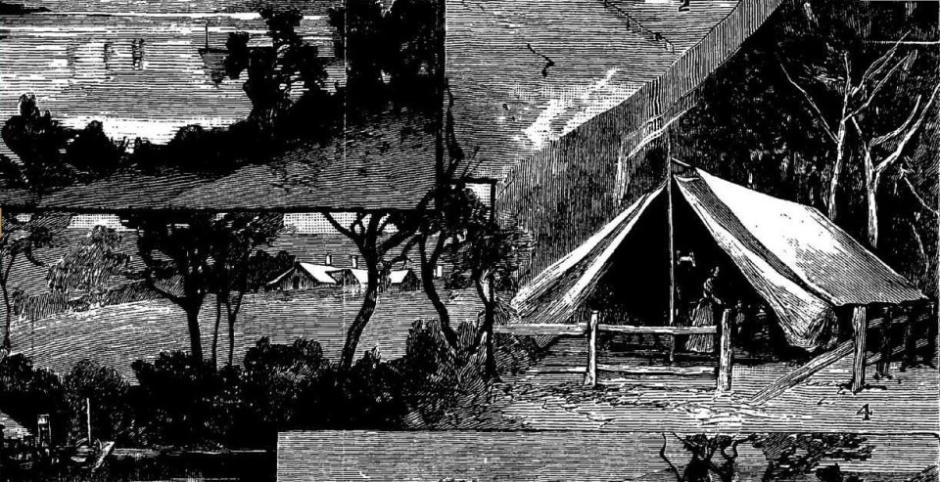
SKETCH: PICTURESQUE NEW SOUTH WALES — MANLY TO PITTWATER. See Page 1368.] 1. D Y Lagoon. 2. The Coast looking from hill above Narrabeen. 3. Pittwater Basin. 4. Public School, Newport. 5. Long Reef and Collaroy Beach. 6. At Newport. PICTURESQUE NEW SOUTH WALES—MANLY TO PITTWATER.-. (1890, June 21). The Sydney Mail and New South Wales Advertiser (NSW : 1871 - 1912), p. 1374. Retrieved from http://nla.gov.au/nla.news-article162074462
Newport School is Pittwater's oldest continually run school, celebrating 125 years of having a schoolhouse in 2016 and 128 years of exisiitng.
Although relatively close to 'Sydney Town' compared to some rural areas were teachers were sent after the introduction in 1880 of the 'Public Instruction Act', there were apparently not enough children to warrant a teacher being provided.
A Provisional School could be established in areas where at least 15 children, but fewer than the 25 required for a Public School, could be expected to attend. Parents provided the building and furniture, while the Council of Education or later the Department of Education paid the teacher and supplied books and equipment. During the 1880s the minimum number of children required was reduced to 12; from 1898 the minimum was 10, and from 1945 it was nine. After 1882 there were provisions for the Department to provide all or part of the cost of buildings, but well into the twentieth century parents often met most of the cost. The schools were generally staffed by untrained teachers or by teachers of the lowest classification. Archives In Brief 26 - Schools, 1788-c1979 - State Records of NSW
THE NEW EDUCATION ACT.
The ‘Public Instruction Act' of 1880, comes into operation on 1st May, 1880. Following are its principal provisions .— The Public Schools Act of 1866, under which bur present system of public schools were established is repealed, and the Council of Education abolished. All votes are to be expended by the Minister, and all officers to be appointed and removed by the Governor. Five classes of schools are to be established and maintained, namely (1) public schools as now carried on, (2) superior public schools, (4) high schools for boys, to prepare students for tho University, and (5) high schools for girls. Teaching shall be non-sectarian, but the words 'secular instruction' shall beheld to include general religious teaching as distinguished from dogmatical and polemical theology, and lessons in the history of England and in the history of Australia shall form part of the course of secular instruction.
Evening schools may be established at the request of at least ten persons. Fees— 3d per child per week up to four of one family ; 1s. per family of four or over; to be paid to the teacher or other authorised receiver, and may be recovered summarilly. Fees are not to be enforced where parents and guardians are unable to pay. Free railway passes will be granted to school children.
Four hours per day are set apart tor secular instruction, and not more than one hour for religious instructions by clergymen or other religious teachers, but no pupil shall be required to receive any general or special religious instruction if : the parents or guardians object. After the expiration of three months from the passing of the act it will be obligatory upon parents to send children between six and fourteen years of age to school for a period of not less than seventy days in each half year, unless the children are being instructed regularly and efficiently in some other manner, or unless there is no school within two miles. Penalty for non-compliance with this section. — 5s for the first offence, and 20s for every succeeding offence, the alternative being imprisonment for a term not exceeding seven days.
Provisional schools may be established in certain cases, and itinerant teachers may be appointed. Aid to denominational schools is to cease after December 31st, 1882, and such schools may then be replaced by public schools. Children attending public schools will be entitled, when educated up to the standard required by the act, to receive a certificate to that effect, signed by an inspector.THE NEW EDUCATION ACT. (1880, April 24). The Riverine Grazier (Hay, NSW : 1873 - 1954), , p. 2. Retrieved from http://nla.gov.au/nla.news-article141036190
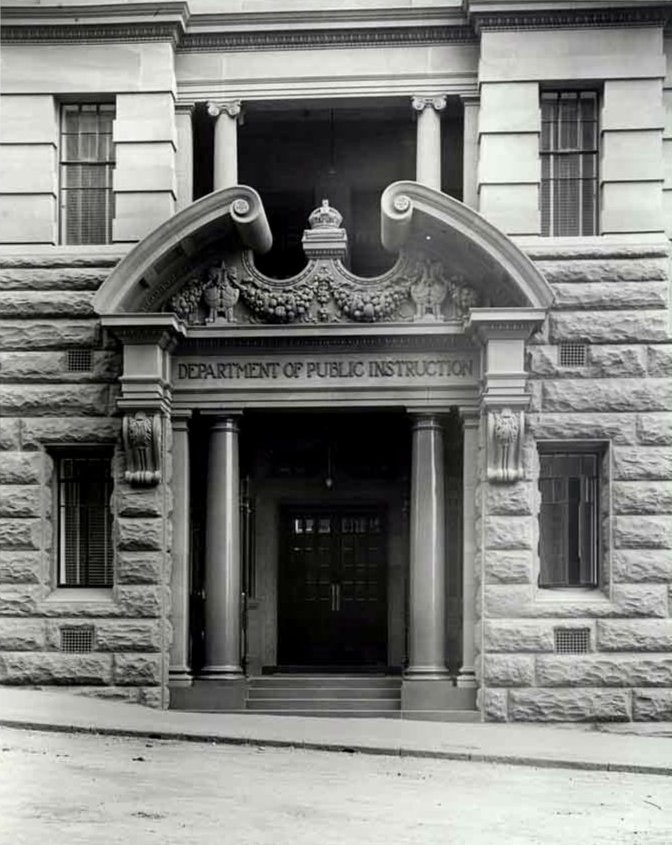
The Department of Public Instruction head office in Bridge Street, Sydney - image courtesy State Records of NSW
A request for a school in Newport in 1887 was denied, as, at Barrenjoey a new school had been opened where we now have a park beside Palm Beach kindergarten and children were expected to attend this, The Barrenjoey School, which began in 1872 in the dunes below the lighthouse and had an official schoolhouse built, two schoolhouses later, that opened on January 25th, 1886. Some records state that even when Newport was established it was on what was termed 'a half day basis' and that students also studied at the Barrenjoey School.
In 1887 though, the Bulfin family, became part of the resident number at Newport, and they had several children. They joined the Boulton children, who had been in Pittwater (Mona Vale Verge of Newport) from 1872 and then at Newport, where Boulton's Farm was established at what is now the corner of Barrenjoey Road and Beaconsfield street.
Apart from running the coaches and mails to Pittwater, farming leased and then owned land, and then taking over the licence and eventually ownership of the Newport Hotel, William Boulton seems to have spent a fair amount of time on the coast as well, travelling to and from where the maize etc. was sold, and found 'things' along his route. These small snippets of information give us an insight into what Newport was like prior to the advent of photography of the area through some descriptions, Notices and sketches:
FOUND, a DINGY, at the Long Reef. The owner can have it on paying expenses. WILLIAM BOULTON, Mona Vale, Pittwater. Advertising (1874, September 19). The Sydney Morning Herald (NSW : 1842 - 1954), , p. 1. Retrieved from http://nla.gov.au/nla.news-article13340056
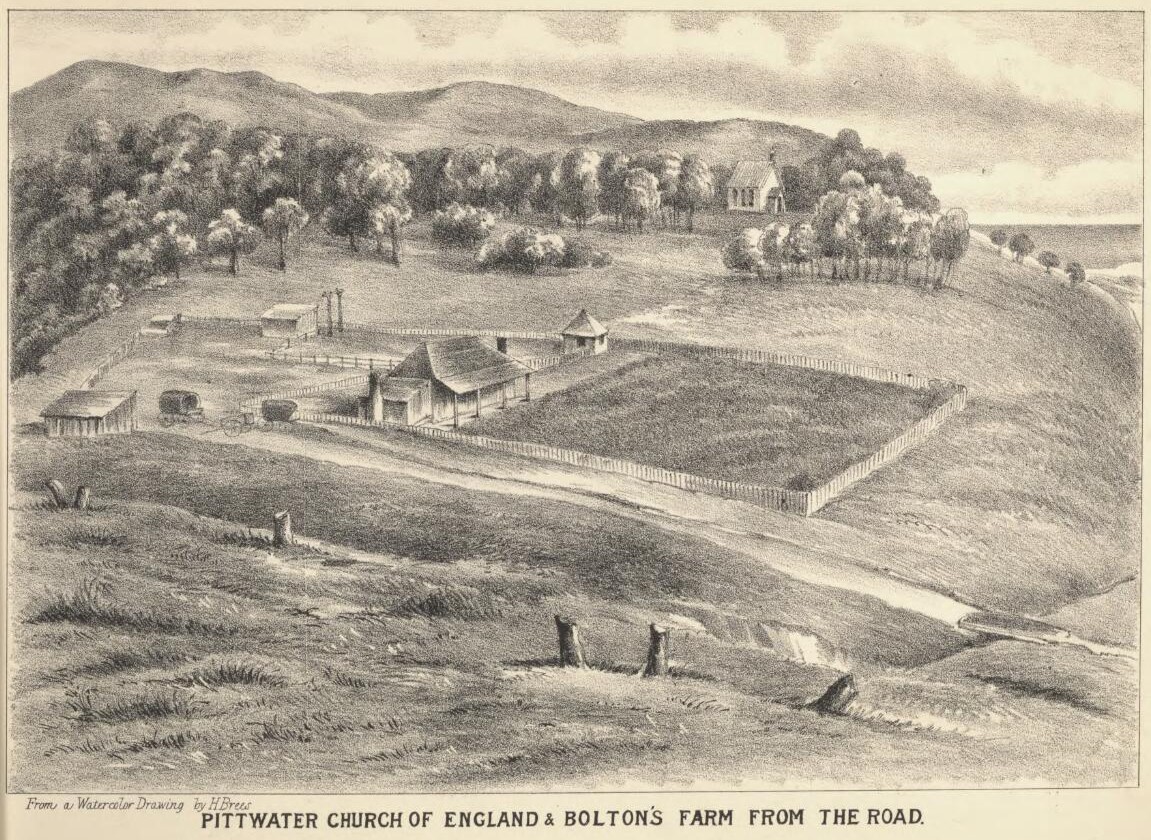
The tenancy of Mona Vale farm became William Boulton's in 1872. He was at Mona Vale until January 1882, when he took out a publican’s licence for the Newport Hotel and then bought the hotel which was not sold until 22 years after he passed away in 1919. Illustration from the Pittwater and Hawkesbury Lakes Album. 1880, Courtesy the Mitchell Library
FOR many years a teak beam-one of the relics of the ill-fated Dunbar-has been jammed between the rocks at Narrabeen. It was recently extricated and taken to Bolton's farmhouse, where it may be seen bleached like deal on the outside, but retaining its natural colour internally. NEWS OF THE DAY. (1880, August 27). The Sydney Morning Herald (NSW : 1842 - 1954), p. 5. Retrieved fromhttp://nla.gov.au/nla.news-article13467015
Publicans' licenses were granted to … William Boulton, Newport. POLICE. CENTRAL POLICE COURT. (1882, February 1). The Sydney Morning Herald (NSW : 1842 - 1954), , p. 3. Retrieved from http://nla.gov.au/nla.news-article13504198
Renewals of licences were granted to the following –W Boulton Newport Hotel, POLICE. (1883, January 31). The Sydney Morning Herald (NSW : 1842 - 1954), , p. 5. Retrieved from http://nla.gov.au/nla.news-article13526591
NEWPORT HOTEL.-WILLIAM BOULTON begs to inform the public that, having taken the above, he is prepared to offer the best accommodation to pleasure - seekers and others. Choicest Assortment of LIQUORS kept. Coaches run from Manly MONDAYS, WEDNESDAYS, THURSDAYS, and FRIDAYS, at 8 a.m., for Newport and Gosford ; FRIDAYS for the Hawkesbury River, at 3.30 p.m. Advertising (1882, April 17). The Sydney Morning Herald (NSW : 1842 - 1954), , p. 12. Retrieved from http://nla.gov.au/nla.news-article13509543
A Meeting of the residents of Pittwater was held on Saturday evening at the Bolton Hotel, for the purpose of urging the Government to make the road from the Lagoon to Newport. Mr. Crawford, who was voted to the chair, explained the object of the meeting, and drew attention to the state of the road, which in some parts was almost impassable. He stated that he was convinced it was only necessary to bring the matter under the notice of the Minister for Works to get the work done. After several speeches had been made, the following gentlemen were appointed to form a deputation to wait upon the Minister:-Messrs. Mc Koowa, Dr. Tibbitta, J. Riley, B. James, and F. Smith. NEWS OF THE DAY. (1883, March 28). The Sydney Morning Herald (NSW : 1842 - 1954), p. 7. Retrieved fromhttp://nla.gov.au/nla.news-article13531240
Mattamolla, Joining National Park £660-Mr Jeannerett, lot 19, Lawson Estate, .....Mr Street, lots 28 to 30, sec L, Newport Estate, Pittwater, £15-Mr Turner, lots 81 and 32, sec. V, £10-Mr. Boulton, lot 81, sec K Newport, £6-Mr. West, ...Total amount of sales for week, £13 071 PROPERTY SALES. (1884, September 20). The Sydney Morning Herald (NSW : 1842 - 1954), p. 15. Retrieved fromhttp://nla.gov.au/nla.news-article13562505
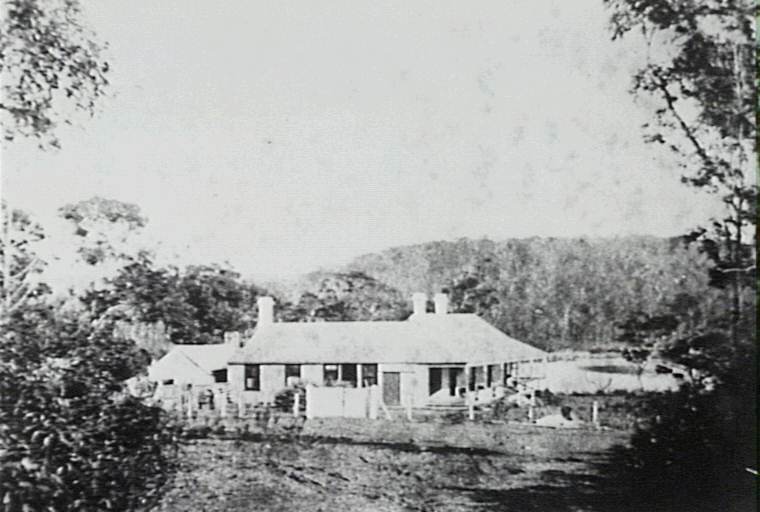
Picture of Newport hotel above is dated 10.7.1884 by Robert Hunt and courtesy State Library of NSW
William Boulton, licensee of the Newport Hotel, Newport, applied, under the 11th section of the Amending Licensing Act, to have the license fee with respect, to his premises reduced from £30 to £16. In the application it was stated that the applicant’s premises are actually required for the accommodation of travellers, and are not accessible by any practicable roadway to any licensed premises, situated within 10 miles of the aforesaid premises. The police reported favourably with respect to the- application. Inspector Lenthall stated that there was no licensed house within 14 miles of that kept by Boulton. That there were no people about there to support a house, and it was required exclusively for the accommodation of persons travelling from Manly to Broken Bay and other places in that district, that recently he had to visit on duty the neighbourhood of the licensed house. The steamer which conveyed him thither broke down, and if it had not been for the existence of Boulton's house he would have had to appeal to some of the settlers to find him accommodation. Mr. Addison said that the applicant was in accordance with the law thoroughly entitled to a reduction, and the Bench considered that on other grounds the adoption of such a course was desirable. The license fee would therefore be reduced to £15. POLICE. (1885, January 30). The Sydney Morning Herald(NSW : 1842 - 1954), p. 5. Retrieved fromhttp://nla.gov.au/nla.news-article13583696
An example of one of the many steamers (ferries) that brought thousands of people to Pittwater each holiday as 'excursionists', which became stuck, due to tide it would seem, in this instance:
Wiseman's Ferry. March 10.
Considerable disappointment was experienced here when it became known on Saturday forenoon that the mail steamer Hawkesbury had got aground at Newport, and would not be up till 11 o'clock that night. Many waited till midnight, and even 1 o'clock, and yet no steamer came, and she did not turn up till Sunday evening, fully 24 hours behind her usual time. It appears she was taking in machinery, &c., used for boring for coal, from a punt alongside, when she was blown broadside on to the sandbank and got fast, as the tide was falling. The evening tide did not rise high enough ; consequently they did not get off till Sunday morning. The Sydney passengers booked to be conveyed by her from Brooklyn (Peat's Ferry ) to Sackville Reach had to return the same way they came, as there was no other boat to take them on. Wiseman's Ferry. (1889, March 23). The Sydney Mail and New South Wales Advertiser (NSW : 1871 - 1912), , p. 617. Retrieved from http://nla.gov.au/nla.news-article161933549
William Boulton to Carl A. Schaffer, Newport Hotel, Newport LICENSING COURT. (1885, October 9). The Sydney Morning Herald (NSW : 1842 - 1954), p. 7. Retrieved from http://nla.gov.au/nla.news-article13599703
From William Boulton, of the Newport Hotel, Newport, to James Aylward. LICENSING COURT. (1886, May 21). The Sydney Morning Herald (NSW : 1842 - 1954), p. 5. Retrieved from http://nla.gov.au/nla.news-article13644041
ONLY HOTEL IN DISTRICT. For SALE, at NEWPORT. Pittwater, WATERSIDE HOTEL and 3 Acres Land, 300 feet deep-water frontage, terminus for steamers and coaches. First-class investment. BLUNSUM and CO, Montagu-chambers, corner of Hunter and Elizabeth streets. Advertising (1886, November 12). Evening News (Sydney, NSW : 1869 - 1931), , p. 1. Retrieved from http://nla.gov.au/nla.news-article107315582
William Boulton to William Bulfin, Newport Hotel, Newport. LICENSING COURT. (1887, April 1). The Sydney Morning Herald (NSW : 1842 - 1954), p. 4. Retrieved from http://nla.gov.au/nla.news-article28349476
William Bulfin and his wife Alice were not the licencees for very long, although longer than others. An article which appears in 1889 eludes to an incident and this is also a year in which Mr. Bulfin was involved in an accident:
William Bulfin, licensee of the Newport Hotel, Newport, was summoned by Leon Houreux, licensee of the Rocklily Hotel, Pittwater, for stealing eight fencing rails, the property of the complainant. A number of witnesses were heard for tho prosecution. The evidence for the defence was in effect that the rails were floating about in the water, and were gathered by a man named Brooks; Bulfin swore he was not guilty of the offence. Mr. Le said he was not satisfied as to the innocence of Bulfin. It was evident that a number of untruths had been told by some of the witnesses. The defendant was ordered to pay the value of the rails, 4s.,and fined 40s., or in default two months to gaol.
POLICE. (1889, June 5). The Sydney Morning Herald (NSW : 1842 - 1954), p. 11. Retrieved from http://nla.gov.au/nla.news-article13733869
BULFIN V. HARPER. Mr. Gordon, instructed by Mr. W. T. A. Shorter, appeared for the plaintiff, and Mr. J. L. Campbell, instructed by Messrs. Want, Johnson, and Co., for the defendant. This was an action brought by William Bulfin, of Newport, against William A. Harper, the elder, of Manly Beach, to recover compensation for personal injuries sustained by him and also damage to his buggy and harness, owing to the negligence of the defendant's servant. The case, as stated by plaintiff, was that on the afternoon of the 1stOctober last he was driving a horse attached to a buggy along the road to Newport. His wife accompanied him, and when about four miles away from Manly, and opposite the Redman Estate, he suddenly came upon a van standing at right angles to the road, with the shafts about 2ft. over the metal of the road-way. There was no one in charge of the van, nor was a horse attached to it, and the vehicle was partly hidden by the scrub on the side of the road. Plaintiff's horse, upon coming up to tho van, "propped," and jumping to the other side of the road, brought the buggy into collision with a culvert post. The force was such that plaintiff and Mrs. Bulfin were thrown violently out and severely bruised; the harness was also broken and the buggy damaged. The injuries to the male plaintiff were of such a nature that he had since been unable to get about without using a walking-stick, but those sustained by Mrs. Bulfin were less serious. Evidence was also given that the van was the property of the defendant, and that the aligned road was 66ft. and the metalling in the locality 15ft. wide. It was further stated that the scrub grew up to the edge of the metalling, and therefore over a portion of the aligned road, on each side.
The defence set up was that the van was hired to a man named Martin in connection with certain surveying operations, and if negligence was proved he was liable, and not defendant. Evidence was also given that the shafts of the van did not project over the metalling of the roadway. The case was not concluded when the Court adjourned. METROPOLITAN DISTRICT COURT. (1890, February 14). The Sydney Morning Herald (NSW : 1842 - 1954), p. 3. Retrieved from http://nla.gov.au/nla.news-article13759374
Transfers of Publicans Licenses were granted as follows: - From William Bulfin to Thomas H. Hodges, for the Newport Hotel, Newport - LICENSING MEETING. (1889, July 5). The Sydney Morning Herald (NSW : 1842 - 1954), , p. 4. Retrieved fromhttp://nla.gov.au/nla.news-article13731956
This may not be the advertisement run to attract a teacher for Newport as the 'pupils' tally doesn't correspond with how many children were now in the valley of Newport, but it does give us an insight into what was required:
To TEACHERS.-Wanted, a SCHOOLMASTER for a Provisional School on the coast. He must be respectable, unmarried, and qualified to teach all the prescribed subjects in the standard of proficiency of the Department of Education. Salary £5 per head, with board and lodging; nine pupils guaranteed. Apply by letter. T. T. P.. 11, Bligh-street, Sydney. Advertising (1888, January 24). The Sydney Morning Herald (NSW : 1842 - 1954), , p. 18. Retrieved from http://nla.gov.au/nla.news-article13677852
Elizabeth Giles is recorded as 'Lizzie Noble Giles' who commenced her teaching career in 1881 at age 20. Miss Giles was appointed to Newport on the 25th of April 1888. Newport is called 'Mona Vale' even though the school was on the edge of Mona Vale and in Newport:
APPOINTMENT OF TEACHERS -The following teachers have been appointed to the positions and schools specified in connection with their respective names
Miss Elizabeth Giles, teacher, Provisional school, Mona Vale; GOVERNMENT GAZETTE. (1888, May 19). The Sydney Morning Herald (NSW : 1842 - 1954), , p. 10. Retrieved from http://nla.gov.au/nla.news-article13686918
Names of pupils enrolled/admitted 1st day – Monday 30th of April 1888: Please note that some children were enrolled at a very young age!
1. Leighton Scott 9 years, George A Baker 9.10, Walter J Baker 3 6 months, 1. Minnie Scott 13.4, Elizabeth Baker 8, Violet Baker 5
Enrolled and admitted May 1st, 1888
William Bulfin 12, John C. Bulfin 11, Edmond Bulfin 9.6, Richard Boulton 14.1, Edward Boulton 10, Lucy Bulfin 14, Annie Bulfin 14 – twins, Alice Bulfin 13, Blanche Bulfin 8.6, Maude Bulfin 6.6, Violet Bulfin 4.6, Lillie E Bulfin 2.6 - 18 students!
Two acres of land were resumed from William Boulton, who had purchased a block in 1884. He was paid £380, for the original Queens Parade site for the school.
Some of these early students continued their education – the Bulfin boys would drive a sulky to Manly to study science. Muriel Bulfin, daughter of John Bulfin, left home to take a Commercial course, travelling by bus.
Newport Telegraph Office.
Last Saturday the new telegraphic office at Newport was formally opened by Mr. Cracknell, the chief superintendent, in the presence of a large assemblage of residents and visitors. Mr. Cracknel delivered a short address, and formally declared the office opened and communication established with the rest of the world. He asked the visitors to join with him in thanking Messrs. Shorter and Boulton for the efforts they had made in bringing about this desirable result. A large number of ladies and gentlemen then adjourned to Bulfin's Newport Hotel, where dinner was provided for those who had taken a prominent part in the proceedings. This opportunity was taken to present the Christmas prizes at the Newport public school, which has been open for about nine months, and is under the supervision of Miss Giles. Various prominent residents had contributed to the prizes, amongst which was a watch, donated by Mr. Aitken to the most efficient pupil. After the prizes had been distributed, an address, signed by the Misses Bulfin and Miss M. Scott, on behalf of their fellow pupils, was presented to Miss Giles. The address was accompanied by a gold-bracelet and a smelling-bottle. The presentation was suitably acknowledged by Miss Giles, after which, the proceedings terminated. Newport Telegraph Office. (1888, December 27). Evening News (Sydney, NSW : 1869 - 1931), p. 8. Retrieved from http://nla.gov.au/nla.news-article108111373
This 'school' was in a tent, an illustration of which is below from a reporter visiting around the same time a politician was launching his election campaign. In 1889 the District Inspector visited the school in a tent, a day it, fortunately, rained. It was deemed advisable to provide the Newport children with an actual schoolhouse. The gazettal of the land resumed for the site:
NOTIFICATION OF RESUMPTION OF LAND UNDER
44 VICTORIA No. 16.
New South Wales, to wit.
(L.S.) Carrington, Governor,
By His Excellency The Right Honourable Charles Robert, Baron Carrington, a Member of Her Majesty's Most Honourable Privy Council, Knight Grand Cross of the Most Distinguished Order of Saint Michael and Saint George, Governor and Commander-inChief of the Colony of New South Wales and its Dependencies.
WHEREAS the parcel of land hereinafter described is required for the purpose of the erection thereon of a Public School and of buildings to be used in connection therewith: And whereas I, as such Governor as aforesaid, with the advice of the Executive Council of the said Colony, have sanctioned the acquisition of the said land for a site for a Public School: Now, therefore, I, Charles Robert, Baron Carmngton, the G-overnor aforesaid, with the advice of the said Executive Council, in pursuance of the power and authority given to or vested in me by "The Lands for Public Purposes Acquisition Act," by this notification, published in the Gazette and a newspaper circulated in the Police District wherein the said land is situated, that is to say, in the " Sydney Morning Herald " newspaper, declare that the parcel of land hereinafter particularly described has been resumed for the purpose of the erection thereon of a Public School and of buildings in connection therewith: And that the said land hereinafter described is resumed with fhe intent that by the publication in the Government Gazette, and in a newspaper circulated in the Metropolitan Police* District, of this notification of the said land being so resumed, the said land shall forthwith become and be vested in the Minister of Public Instruction of the said Colony and his successors, on behalf of Her Majesty, for the purposes of the said Act, for an estate of inheritance in fee simple, in possession, freed and discharged from all trusts, obligations, estates, interests, contracts, charges, rights-of-way, or other easements whatsoever, and that the legal estate therein, together with all powers incident thereto or conferred by the said Act, shall be vested in the Minister of Public Instruction as a Trustee, as in the said Act is provided : And I declare that the following is the parcel of land hereinbefore referred to as resumed by this notification, that is to say :—
All that piece or parcel of land situated at Mona Vale, Pittwater, containing 2 acres and 12 perches, being allotments 11 to 14 inclusive, of section D, of the new marine township of Newport, in the parish of Narrabeen, county of Cumberland: Commencing at the intersection of the south-west side of Stuart-street with the south-east tide of the Queen's Parade; and bounded thence on the norlh-ea*t by the southwest side of the first-mentioned street bearing south 10 degrees 39 minutes east 5 chains 71 links; thence on the southeast by the north-east side of Beaconsfield-street bearing north 85 degrees 59 minutes west 4 chains 13^ links; thence on the south-west by allotment 10 bearing north 10 degrees 39 minutes west 4 chains 66-^y links to the south-east side of The Queen's Parade aforesaid ; and thence on the north-west by that side of that street bearing north 79 degrees 21 mi lutes east 4 chains, to the point of commencement.
In testimony whereof I have hereunto set my Hand, and caused the Great Seal of the Colony to be hereto affixed, at Government House, Sydney, this eighteenth day of March, in the year of our Lord one thousand eight hundred and eighty-nine, and in the fifty-second year of Her Majesty's Reign.
By His Excellency's Command,
J. H. CARRUTHERS.
GOD SAVE THE QUEEN! [2238] NOTIFICATION OF RESUMPTION OF LAND UNDER 44 VICTORIA No. 16. (1889, March 22). New South Wales Government Gazette (Sydney, NSW : 1832 - 1900), p. 2228. Retrieved from http://nla.gov.au/nla.news-article223991512
The tender for the works advertised:
TENDERS FOR WORKS IN CONNECTION WITH PUBLIC SCHOOLS.
TENDERS will be received at this office for the Works specified in the schedule hereunder up to 12 o'clock noon on the various dates set forth in the second column. Tenders are to be addressed to the Under-Secretary, Department of Public Instruction, Sydney, and endorsed, "Tender for [... insert the name of school and the work to which the tender relates]." , J. H. CARRUTHERS.
MONA VALE. Newport-New Buildings. Where Plans and specifications may be seen and Forms of Tender obtained - Department of Public Instruction and Public School, Mona Vale - Date up until which Tender will be accepted - March 17, 1890.Advertising (1890, February 25). The Sydney Morning Herald (NSW : 1842 - 1954), , p. 2. Retrieved from http://nla.gov.au/nla.news-article13760824
The speech made on day foundation stone was laid – written in longhand by William Boulton and found inside the original foundation stone when this was being cut to add to the new Infants Block completed in 1969:
'made of stone with two windows in the east and one in the north-western corner and two in the west. A door opened on the eastern side, where there was a verandah with wash basins and a hat rack. A chimney was in the western wall. The classroom was equipped with eight long desks and forms, three placed west, three placed east and two in the north. The teachers desk and two easels were placed in front of the fireplace.Two iron tanks were installed at the back of the building. The fence was a split post and rail, with two rails (see photo below of road heading down to Newport Bay circa 1900). The fence had gates to Beaconsfield Street and Queens Parade with a double gate into Stuart Street.'
Suburban Railway Agitation.
ST. LEONARDS. SIR HENRY PARKES AT NEWPORT.
The electoral campaign so far as the Ministry are Concerned was opened yesterday, when Sir Henry Parkes addressed a small meeting at Hodge's Newport Hotel in the afternoon. Mr. W. Bulfin occupied the chair.
Sir HENRY PARKES, who met with a hearty reception said he had come out to Newport that morning with some pleasurable anticipations. He remembered addressing a small meeting in that immediate neighbourhood some time ago, and ho met with so much cordiality and altogether so much enjoyed his visit that he felt certain that he should have a repetition of that kind of enjoyment. But he came out here with other anticipations, which might appear to some hardly well founded, but which to his mind, had a very good foundation . He looked forward to the time when that portion of the colony would be a very busy scene. It was not in the nature of things for a place possessing so many advantages in so many features of natural attractiveness to remain for a long time without those natural beauties being taken advantage of and though they were a scattered hamlet now with only a few persons attending a meeting of that kind he anticipated the time-and not beyond another generation when Newport would be a well-known fashionable watering place…
Sir Henry Parkes, in replying, said that as they had been good enough to pass a vote of confidence in him without asking any questions, he had one or two pieces of information to give them as a member of the Government. The Government was considering, and he had no doubt that consideration would lead to active steps being taken of supplying them with a wharf suited to their purposes, on both sides of that important water He ascertained that from the Works Department. Also he had to tell them that the Government was considering better requirements for the Public school there, for the accommodation and shelter of the children attending.
He was glad to see the youngsters present, because they had arrived at an age when they came to take an interest in the course of public affairs, and in a few short years-a few years which would fly away in swifter moments than they could imagine-they would be men in the life of the country.
A vote of thanks to the chairman was passed, and the meeting closed. ST. LEONARDS. (1891, June 9). The Sydney Morning Herald(NSW : 1842 - 1954), p. 5. from http://nla.gov.au/nla.news-article13827407
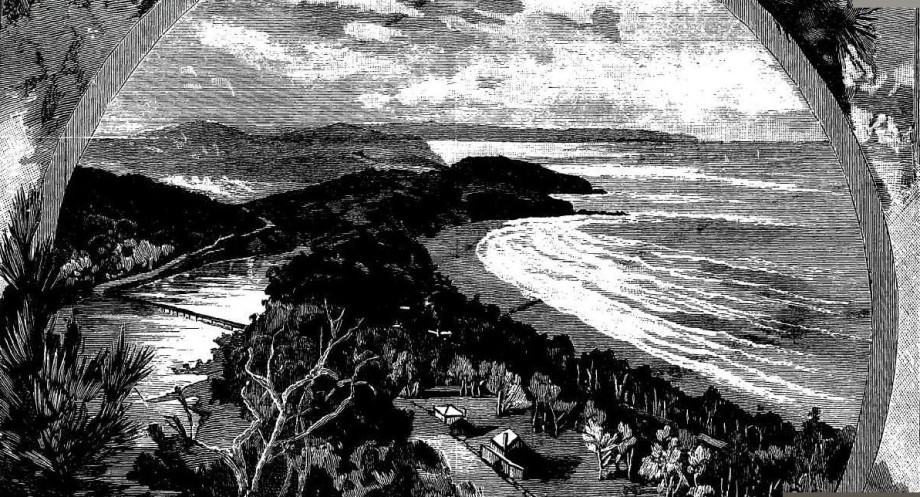
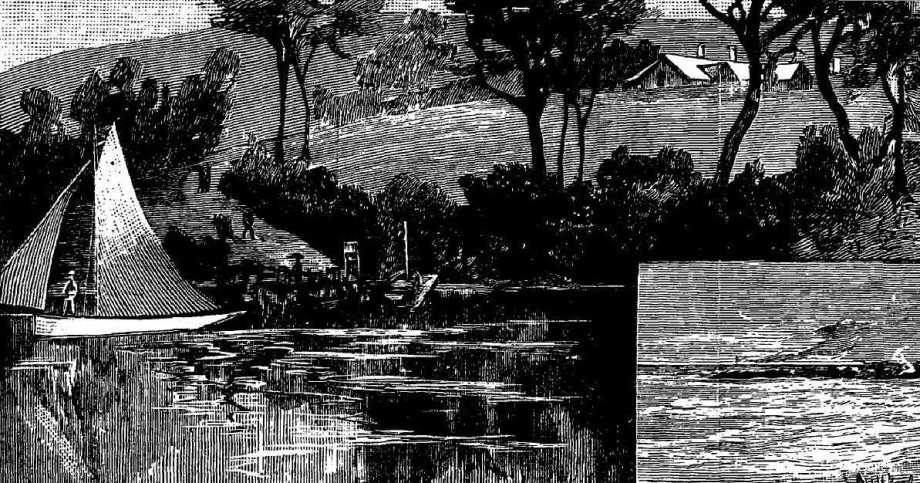
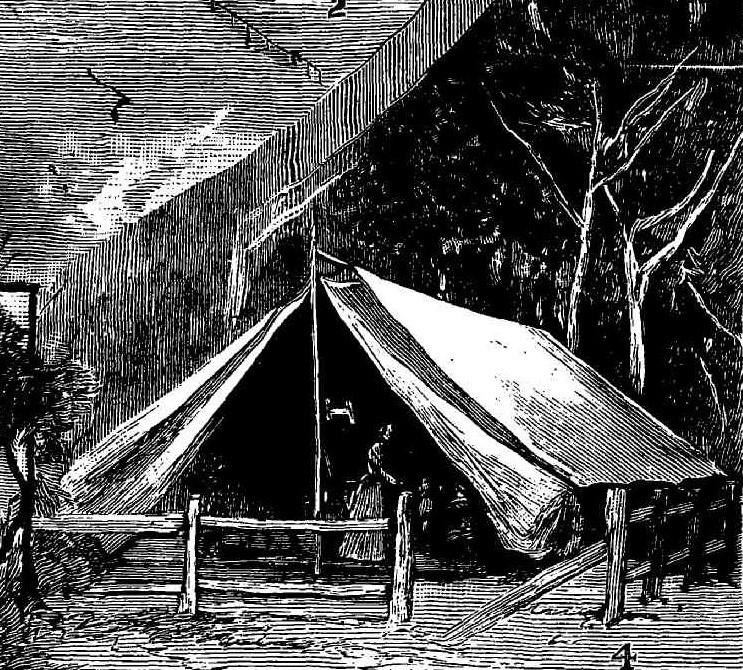
The new public school at, Newport was opened on Saturday. A grand entertainment was given on the occasion. Advertising (1891, February 23 - Monday). Evening News (Sydney, NSW : 1869 - 1931), , p. 5. Retrieved from http://nla.gov.au/nla.news-article114310657
No description could be found of the 'grand entertainment' but it may have been similar to one which occurred later that year. Sir Henry Parkes, 'the Father of Federation' and then Premier of N.S.W. visited during an election year and promised;
SIR HENRY PARKES AT NEWPORT
The electoral campaign so far as the Ministry are Concerned was opened yesterday, when Sir Henry Parkes addressed a small meeting at Hodge's Newport Hotel in the afternoon. Mr. W. Bulfin occupied the chair.
Sir HENRY PARKES,who met with a hearty reception said he had come out to Newport that morning with some pleasurable anticipations. He remembered addressing a small meeting in that immediate neighbourhood some time ago, and he met with so much cordiality and altogether so much enjoyed his visit that he felt certain that he should have a repetition of that kind of enjoyment.
Also he had to tell them that the Government was considering better requirements for the Public school there, for the accommodation and shelter of the children attending. ST. LEONARDS. (1891, June 9). The Sydney Morning Herald (NSW : 1842 - 1954), p. 5. Retrieved from http://nla.gov.au/nla.news-article13827407
According to one of his opposite numbers, Mr. G. R. Dibbs, and although the meeting and speech given was at the Newport Hotel on a Tuesday morning and those school children possibly should have been in...school;
'Sir Henry Parkes had slandered him at every conceivable opportunity, but had not the courage to meet him in the heart of the city, and so had to sneak in by the back door and open the campaign for his party in some outlandish place called Newport, where his audience consisted of six electors, as many school children, together with a few policemen and reporters. In order to get these few miserable votes in support of his St. Leonards candidature, Sir Henry Parkes did not stop at the grossest corruption; for he promised Newport two jetties if it returned him, and the Manly tramway as well, well knowing that the latter had been condemned by the present Parkes Government. The General Election. DIBBS IN SOUTH SYDNEY. (1891, June 12). Barrier Miner (Broken Hill, NSW : 1888 - 1954), p. 2. Retrieved from http://nla.gov.au/nla.news-article44068479
The Premier went on to Manly to speak in the evening, when people may not be at work fishing and in their farm fields or at home doing umpteen loads of washing by hand. According to the SMH:
SIR HENRY PARKES AT MANLY.
Sir Henry Parkes addressed a very large number of the residents of Manly at the Aquarium Hall last evening. The audience included a goodly number of ladies. The chair was occupied by Mr J. Cameron (Mayor of Manly) Sir Henry Parkes, who was well received, said it was right that he should call their minds to a short speech which he made on the occasion on which Mr. Barton spoke in that hall on the question of Federation. At that time, with no immediate prospect of dissolution of Parliament before him, he told them it was his intention to come to Manly as one of their representatives before many days to address them, and he would have taken that course had not the course of things taken the turn it had since that time. He was there then, however, under quite different circumstances. The Parliament of this country had now undergone the process of dissolution-that was the Legislative Assembly, the only body that was capable of dissolution, had boon dis-solved. As he was Premier, and responsible for offering that advice to his Excellency the Governor, it seemed to him, speaking to that large meeting of his constituents, his first duty was to justify the advice ho and his colleagues gave...SIR HENRY PARKES AT MANLY. (1891, June 9). The Sydney Morning Herald (NSW : 1842 - 1954), p. 5. Retrieved from http://nla.gov.au/nla.news-article13827405
George Dibbs won that election after arranging support from the Labour party (then known as the Labour Electoral League of New South Wales), who took a significant number of votes and seats from both of the previous two major parties in the Assembly, giving Labour the balance of power in their first ever N.S.W. state election. How many residents of the 'outlandish Newport' voted for him is hard to tell. The school children present would have been the offspring of the publican; what parent would deny their child a chance to meet a real live Premier?
Department of Public Instruction, .... Sydney, 11th June, 1891.
CLOSING OF SCHOOLS ... COUNTY OF CUMBERLAND ON 17th JUNE.
The Closing of all Schools in the County of Cumberland on the 17th instant, has been authorised to enable Teachers to Record their Votes at the Elections to be held on that date...T. S. JOHNSON, Under-Secretary, ST. LEONARDS ELECTORATE.
Mr. J. C. B; P. SEAVER (Late Member, for Gloucester) will ADDRESS the ELECTORS, As under-. TONIGHT, FRIDAY— Warehouse’s Hotel, Gordon, at 7; and at Wilke's Hotel, Willoughby, at 8.30. SATURDAY. 13th—Hodge’s Hotel, Newport; and at Oddfellows' Hall, Manly, at 8 o'clock. L. F: EBSWORTH, General Secretary. Advertising (1891, June 12). Evening News (Sydney, NSW : 1869 - 1931), , p. 8. Retrieved from http://nla.gov.au/nla.news-article113890490
Meanwhile, at outlandish Newport:
Newport New Hall
On Saturday night the hall at Newport lately erected for social and intellectual entertainments was opened by a concert given by Mr. Graham and the Euphonic Orchestra: The hall is picturesquely situated amid bush surroundings and gum trees, and was rendered gay with bunting festooned from the trees. Boat loads of people came from Bayview and the surrounding districts, and after the concert an impromptu dance closed the evening. The interior of the hall is nicely decorated with paintings and half life-sized figures of classical and literary heroes. A small stage, with proscenium and footlights, enables dramatic performances to be given there. Newport New Hall. (1891, November 9).Evening News (Sydney, NSW : 1869 - 1931), , p. 4. Retrieved from http://nla.gov.au/nla.news-article111992659
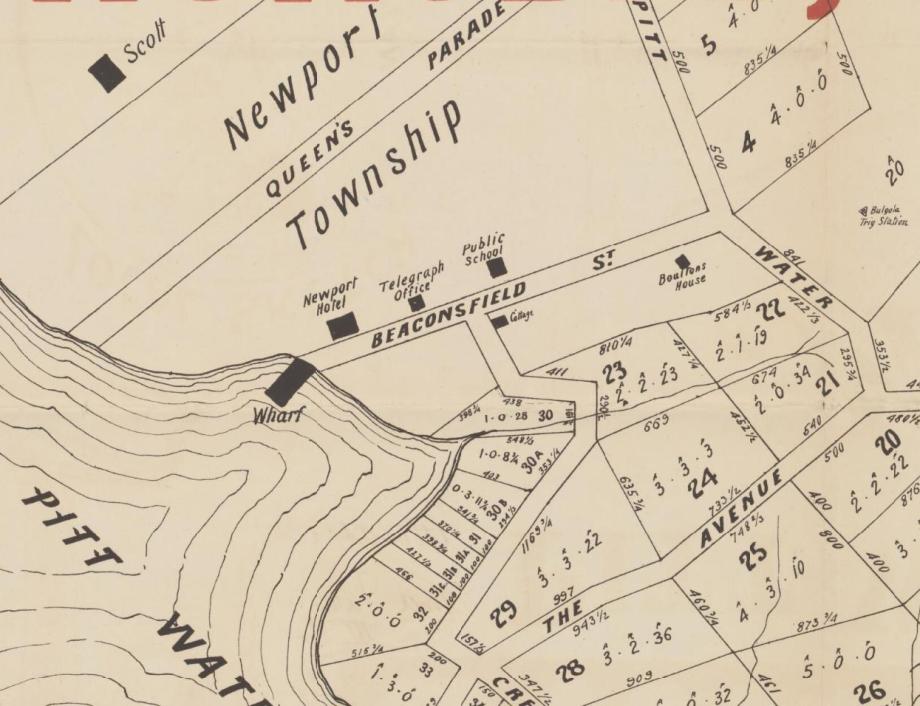
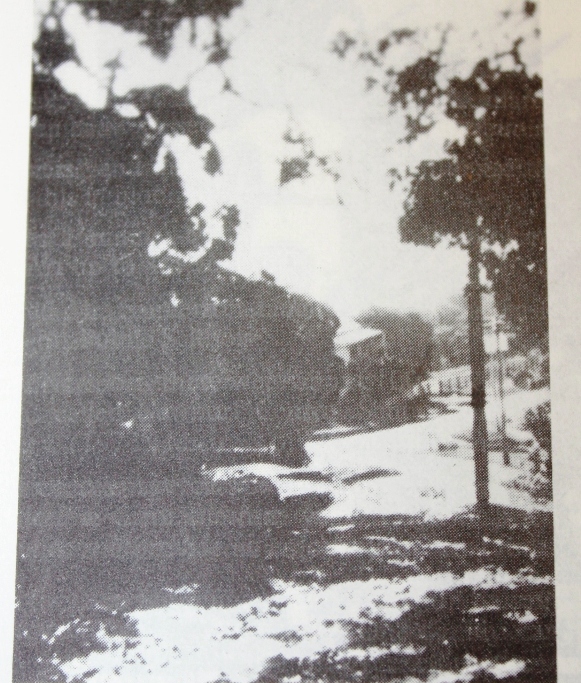
The landscape of Newport may be read of in: The Newport Wharf On Bushrangers Hill and Pittwater Reserves: The Green Ways; Bungan Beach and Bungan Head Reserves: A Headland Garden
We're fairly certain this is from the pen of a Hodges family member - still touting what's great about Newport to attract holiday visitors;
NEWPORT, I think the most enjoyable Christmas I ever spent, and I have been to pretty well every resort within a hundred miles of Sydney, was at Newport. It is within easy access of town. First by steamer to Manly, and, if' you cycle, there are no pleasanter rides than that to Newport. For the first ten miles there is hardly a hill worth mentioning, and the scenery going along the coastline is something which will never be forgotten, and now as then, as at Narrabeen, a lovely bit of seashore, and always a fresh breeze. The veriest novice on the wheel can do the trip in an hour and a quarter, and refreshment may be had at several places, en route. For those cyclists who wish a longer ride, the trip from Milson's Point will be very enjoyable, though from the Spit to Manly it is very hilly. Those who do not cycle can take the .coach from Manly; fare, 1/6 each way. A really homely hotel, with sea baths and boats thrown in and a first-class table is available at a tariff of 6/ per day, so that a three days' stay can be enjoyed, with other items, such as fares, &c., at a cost of 25/. The surroundings are all that could be desired. The ocean beach is about a mile away, and there are shady nooks for picnic parties. From Bushrangers' Hill a lovely view can be had by those fond of climbing, extending right along the coastline to Sydney Heads, and plenty of Xmas bells, flannel flowers, and Xmas bush to be gathered. Then there is Barrenjoey to be visited and explored by those so minded, and the boats can be well utilised in the bay, where there is plenty of fishing and oystering to be done. They are real beauties, the Newport oysters. Very likely on the Boxing Day a steamer with passengers from Sydney will pay a visit, and if you are so minded you can return by her, and add to your enjoyment. — F.H. NEWPORT. (1898, December 25). Sunday Times (Sydney, NSW : 1895 - 1930), , p. 12. Retrieved from http://nla.gov.au/nla.news-article125526254
On February 21st 1900 Newport school officially became 'Newport Public School', meaning there were more children in attendance. Local records indicate there were over 100 people living in Newport by now and 20 homes.
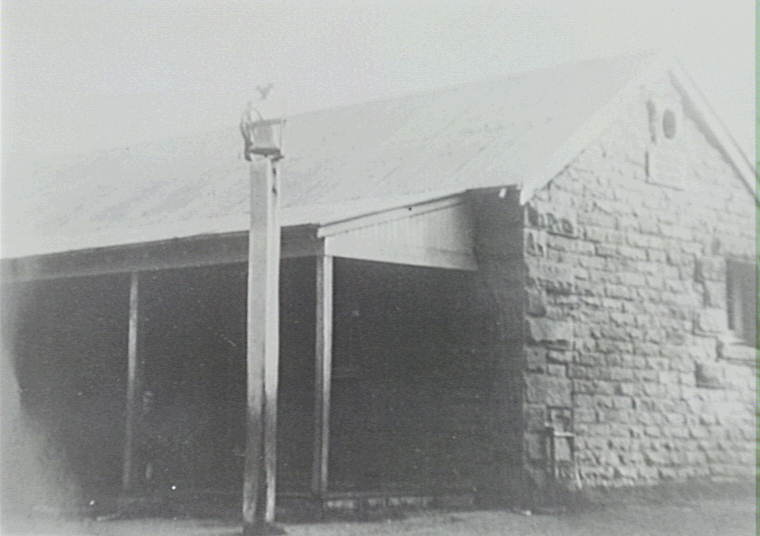
Newport Public School 1900 - showing the school bell - courtesy Pittwater Local studies - Historical Images, Mona Vale Library.
Concerts held at Newport Hall where the schoolchildren sang the then current songs and their 'tutor' is named - this also informs us that what was taught at the Newport school had gone beyond writing, reading and maths and that children as young as 3 were attending:
A concert was held on Saturday last at the Newport Hall, Pittwater, in aid of the N.S.W. Patriotic Fund. The hall was crowded, and the entertainment a thorough success. The pupils of the Newport Public School opened the concert with a children's chorus, 'Little Gleaners,' the stage being set as a harvest scene, and later they sang, with Miss Black's assistance, 'Hush, the Bogie Man.' Little Mymie Bramley (aged 3) was heartily applauded for her contribution of 'Children of the Empire,' with a well-rendered chorus. 'Those who gained encores for their contributions wore Miss E. Black ('Absent-Minded Beggar'). Miss Black ('Goodbye'), Mr. A. Wetherall ('The Don' and 'The Grass Widower'), Mr. J. Pearson ('Henry V: Before Harfleur' and 'The Light Brigade'), l&r. C. ; M. Burney ('That's How I Saved My Life' and 'Fosi-: poned. Rather'), and Mr. H. Phillips ('Sleeping : Camp' and 'All Coons Look Alike to Me'), Miss W. Stratton sang 'The Gift of Rest,' and played a couple of piano solos; and Mrs. Brownlow 'The Sleeping Camp'. Other items were rendered by Mr. T. Dudgeon, Mr. A. Simpson, Mrs. Stuart Greig, Mr. W. Eaines, and Mr. Geo. Solomon. The accompanists were Misses E. Black and Winifred Stratton. The entertainment was promoted by Mrs. and the Misses Black, and was ably assisted by Mrs. Norris and Mr. Stuart Greig (treasurer). The children in their choruses reflected credit on Miss Black's careful tuition, their contributions being especially well rendered. The sum netted by Miss Ettie Black for her singing of 'The A.M.B.,' amounted to £1 4s 11d. The result of the concert will be the handing over to the fund of a sum of over £7. SOCIAL ITEMS. (1900, May 25). Evening News (Sydney, NSW : 1869 - 1931), , p. 8. Retrieved from http://nla.gov.au/nla.news-article113718246
Another, also to raise funds for those elsewhere:
BAZAAR AT NEWPORT. A bazaar in aid of Indian Famine Fund has been held in the Newport Hall. On the opening day there was a large gathering of ladies and gentlemen, among those present being Mr. Dugald Thomson, M.L.A. Mrs. Norris, teacher of the Public school, acted as secretary, and Mr. E. J. Higgins as treasurer. BAZAAR AT NEWPORT. (1900, November 12). The Sydney Morning Herald(NSW : 1842 - 1954), p. 5. Retrieved from http://nla.gov.au/nla.news-article14343635
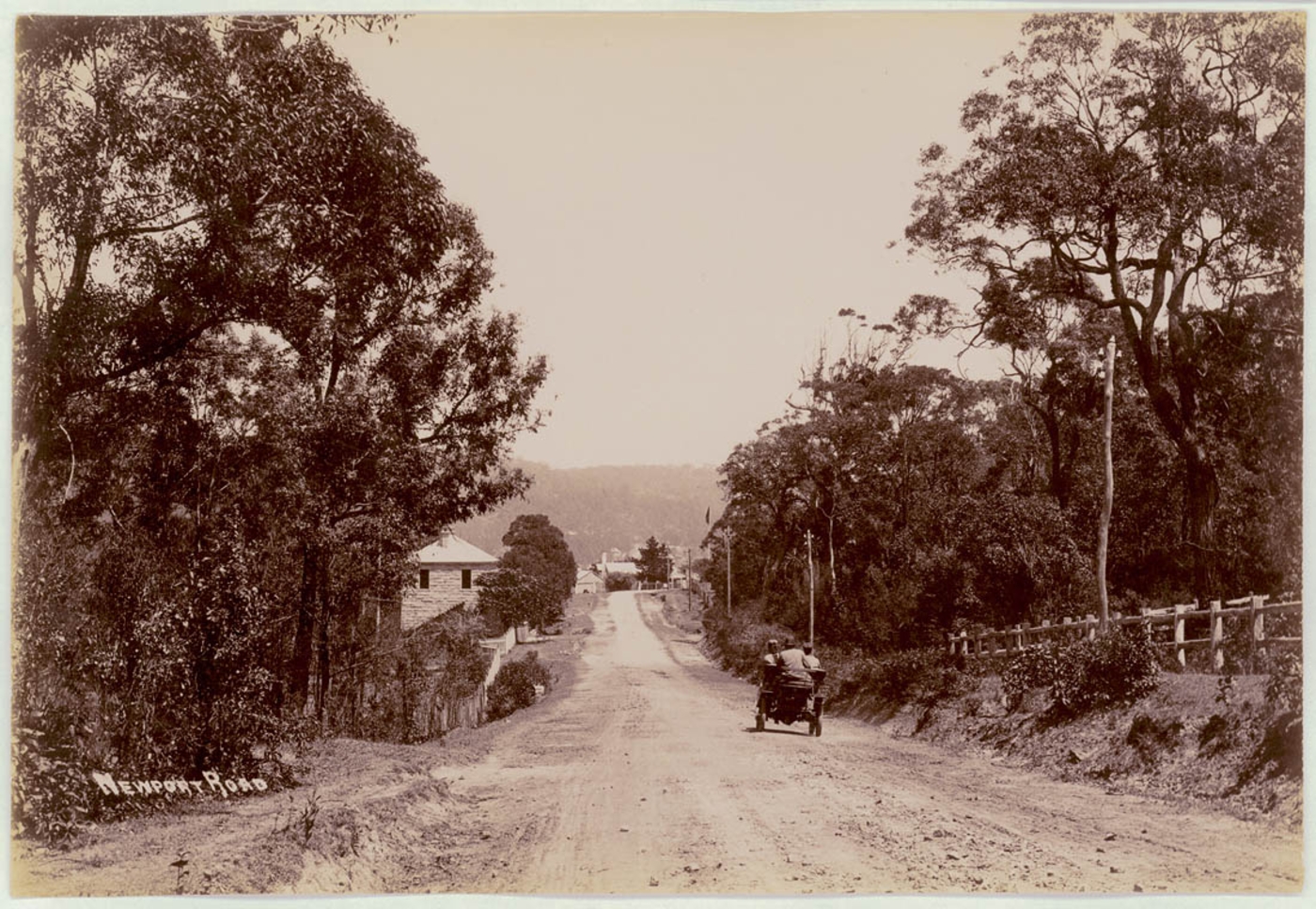
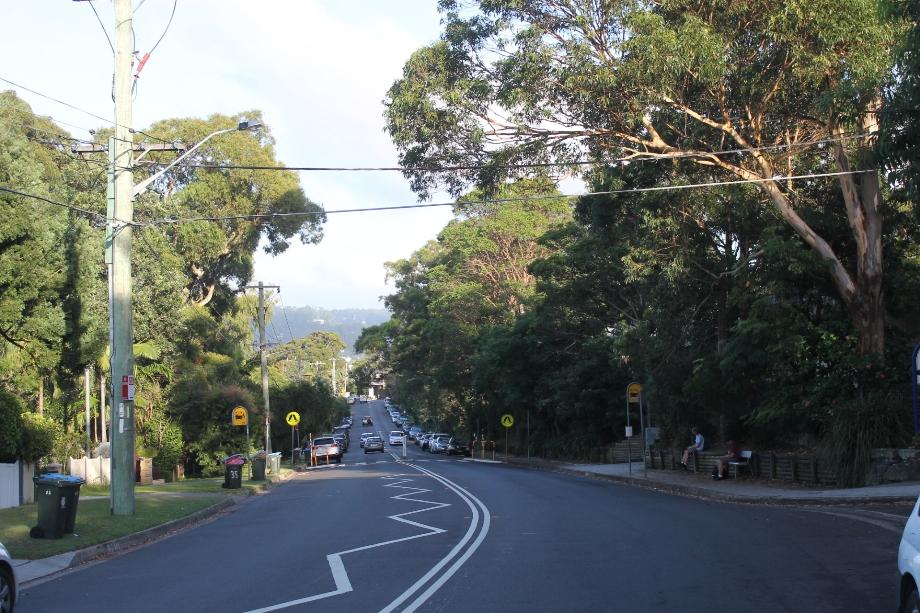
Same road, March 2016
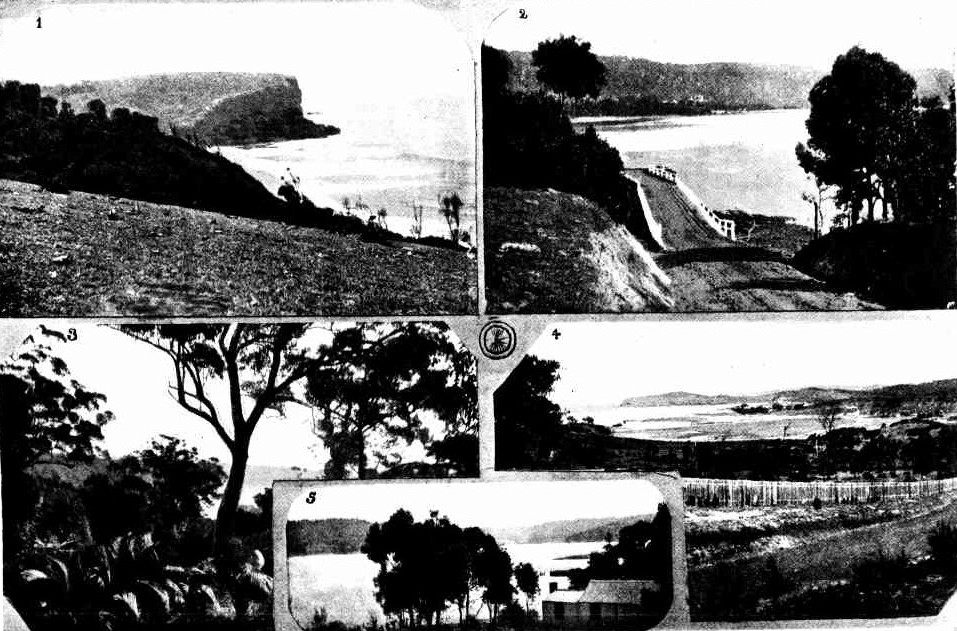
1 A glimpse of coast scenery from Newport-road. 2. Bay View from Newport Wharf. 3. Bush scene near Newport. 4. View near Terminus at Pittwater. 5. Broken Bay. VIEWS NEAR TERMINUS OF MANLY-PITTWATER CYCLE PATHS. Manly to Pittwater Cycle Path. (1901, August 24). The Sydney Mail and New South Wales Advertiser (NSW : 1871 - 1912), p. 478. Retrieved from http://nla.gov.au/nla.news-article165234800
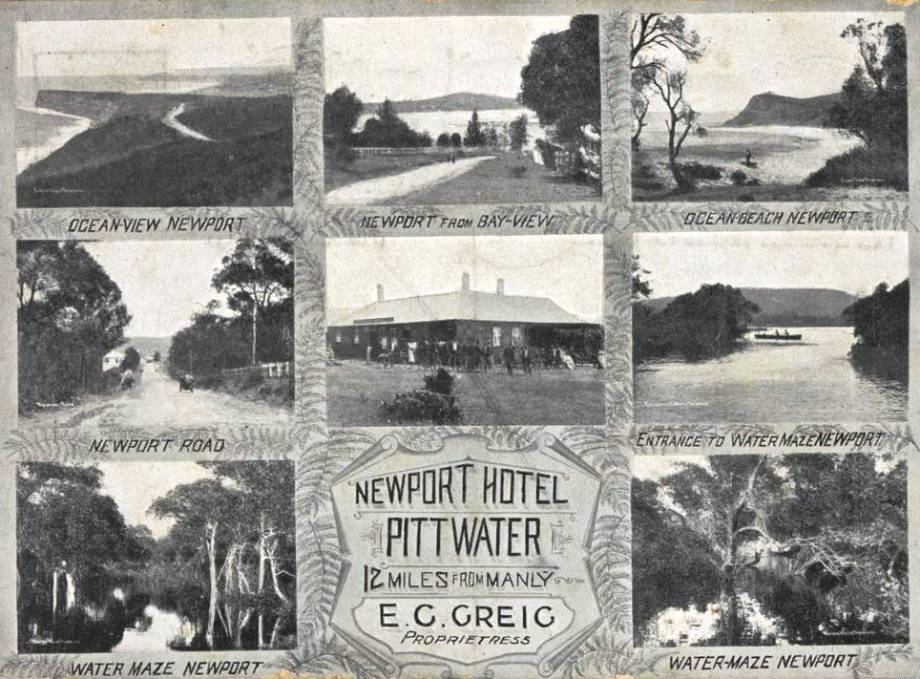
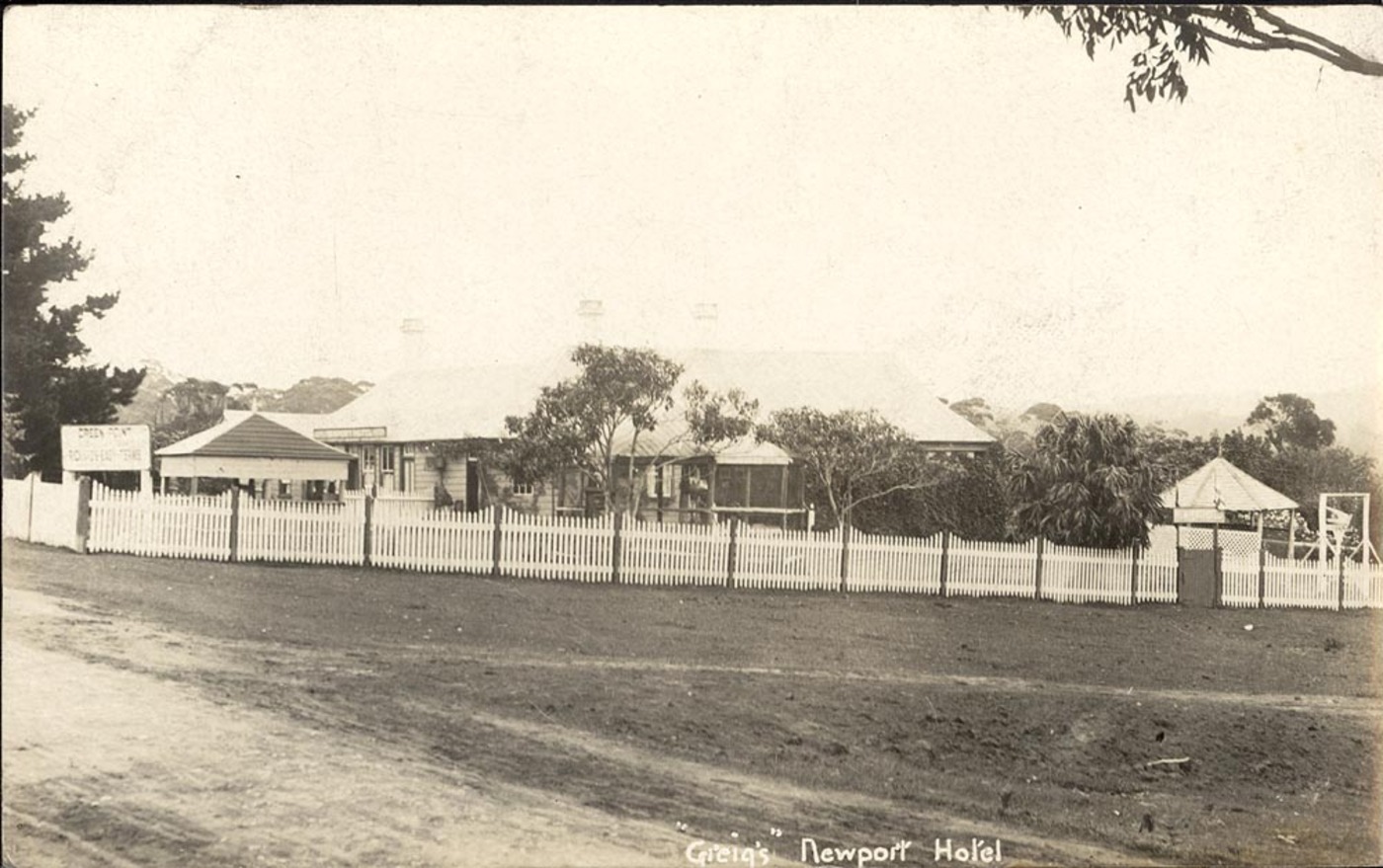
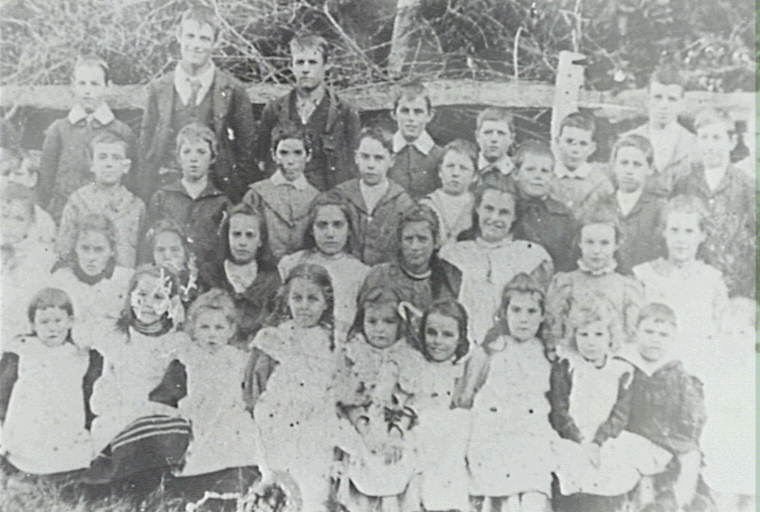
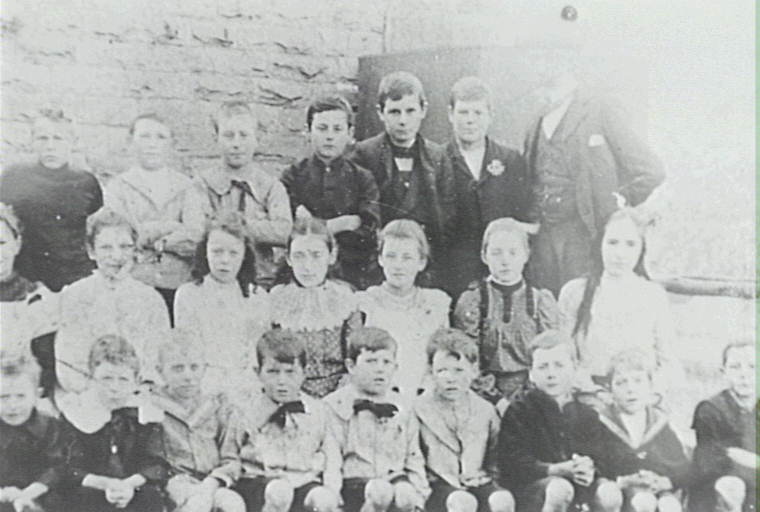
Mr. Porter's work stretched from the 9 mile peg to Barranjoey as well as to Bayview and Church Point. He also ensured Newport Public school had adequate firewood during the colder months for years when this was the means for keeping pupils warm.
The family’s home, in the Avenue, Newport, is on early cartographic sales maps dated 1900, and was called simply “Home” during a prolonged era when people gave names to their homes.
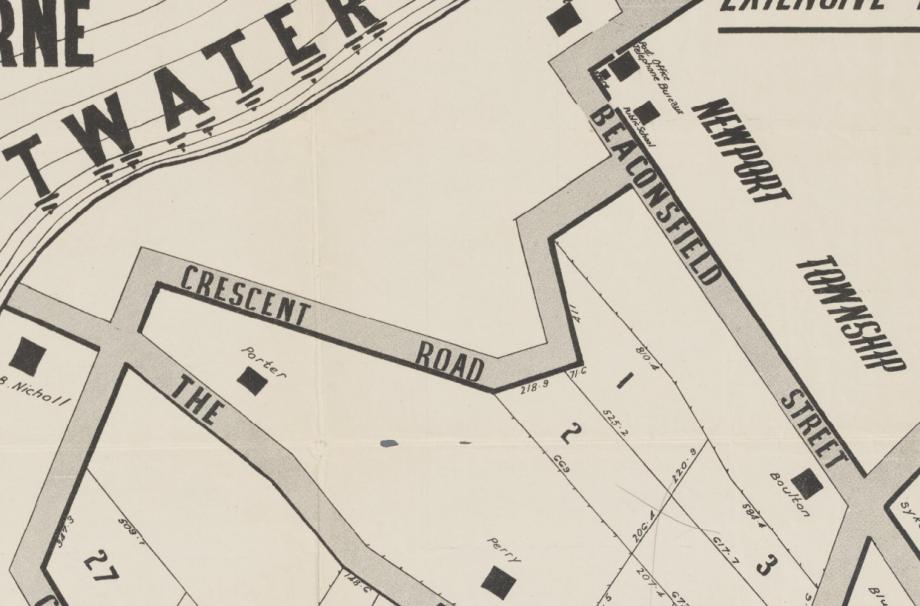
Section from: Sales plan for land in Mona Vale, New South Wales. "A.W. Stephen, licensed surveyor RPA, 47 Castlereagh Street". Sales plan of Mona Vale estate, Pittwater. Mona Vale [cartographic material]. Mona Vale estate, Pittwater [cartographic material] 1900 - 1909. MAP Folder 103, LFSP 1554. Courtesy National Library of Australia.
The children of Robert and Ann Porter, and year of birth: from NSW Births, Deaths, Marriage Records.
20261/1894 PORTER CARL H ROBERT ANN MANLY
4582/1899 PORTER LUCY M ROBERT ANN MANLY
12236/1885 PORTER FRANCES M ROBERT ANN MANLY
13099/1886 PORTER ROBERT D ROBERT ANN MANLY
20940/1890 PORTER WILLIAM J ROBERT ANNIE MANLY
14196/1901 PORTER SEPTIMUS E ROBERT ANN MANLY
32040/1896 PORTER WALTER S ROBERT ANNIE MANLY
32041/1896 PORTER ALBERT E ROBERT ANNIE MANLY
21623/1892 PORTER SYDNEY G ROBERT ANNIE MANLY
FIVE SOLDIER BROTHERS.
PRIVATE BERT PORTER, . 10. PRIVATE CARL PORTER, PRIVATE SIDNEY' PORTER, 23. PRIVATE ROBERT D. PORTER, 20. SONS OF MR. ROBERT PORTER, OF NEWPORT, MANLY. PRIVATE WILLIAM JAMES PORTER, 25 (wounded).
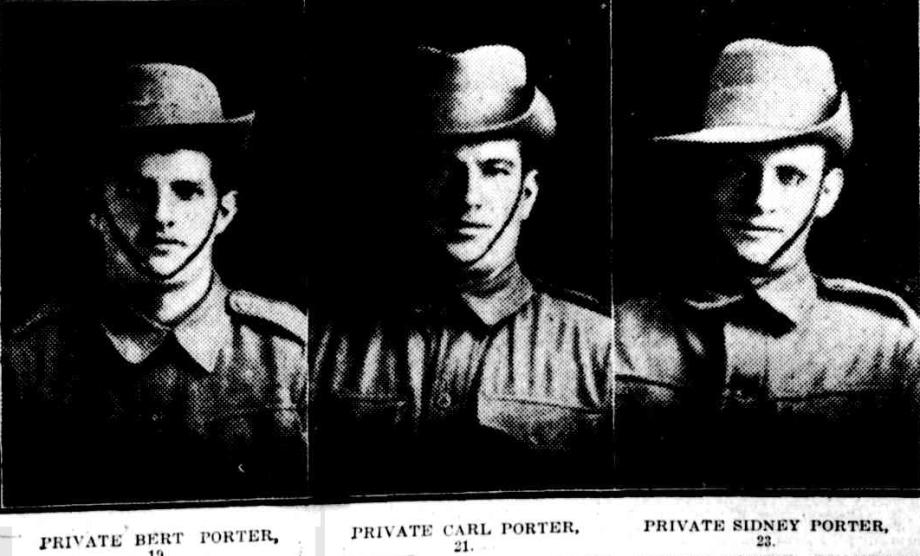
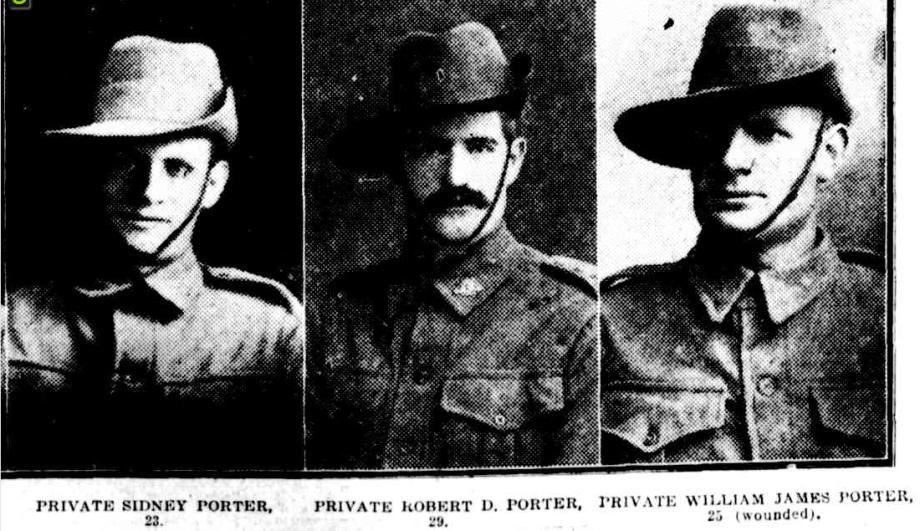
Mr. and Mrs. Robert Porter, of Newport, have reason to be proud of their sons, five of whom have enlisted and are at, or on their way to the front.
The first of the sons to get into khaki was William, aged 23. He went away from Sydney with one of the first contingents, and going through the famous landing at Gabe Tepe on April 25 scatheless, he was in the trenches for nearly four months before he was wounded. His parents were officially advised of his casualty at the time, but since then no news has reached them as to his condition, notwithstanding the fact that a number of inquiries have been made.
Robert, the eldest son, aged 29, was the next one to see his path of duty. The other three sons, Sydney, aged 23, Carl, 21, and Bert, 19, left recently with one of the contingents from Sydney for the front. FIVE SOLDIER BROTHERS. (1916, January 22). The Sydney Morning Herald (NSW : 1842 - 1954), , p. 10. Retrieved from http://nla.gov.au/nla.news-article15638624
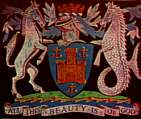 In late 1909 or early 1910 the schoolchildren of Newport corresponded with Newport, on the Isle of Wight. A record of them receiving a flag in return for one they sent makes the papers! There is no description of what flag the children here sent but there is one of what came back - a Union Jack with Newport's 'ARMS'. This is also interesting as the words 'Newport Arms' later became the name of the Newport Hotel and there was a Newport Arms Hotel on the Isle of Wight until 1908. The Island's motto is All this beauty is of God , the arms or crest depicts a horse and seahorse symbolising agriculture and the maritime which have supported and conditioned Island life in so many ways. Royal associations are represented by a castle on a shield, and the insular nature of the Island is suggested by waves of the sea lapping the base of the arms.
In late 1909 or early 1910 the schoolchildren of Newport corresponded with Newport, on the Isle of Wight. A record of them receiving a flag in return for one they sent makes the papers! There is no description of what flag the children here sent but there is one of what came back - a Union Jack with Newport's 'ARMS'. This is also interesting as the words 'Newport Arms' later became the name of the Newport Hotel and there was a Newport Arms Hotel on the Isle of Wight until 1908. The Island's motto is All this beauty is of God , the arms or crest depicts a horse and seahorse symbolising agriculture and the maritime which have supported and conditioned Island life in so many ways. Royal associations are represented by a castle on a shield, and the insular nature of the Island is suggested by waves of the sea lapping the base of the arms. 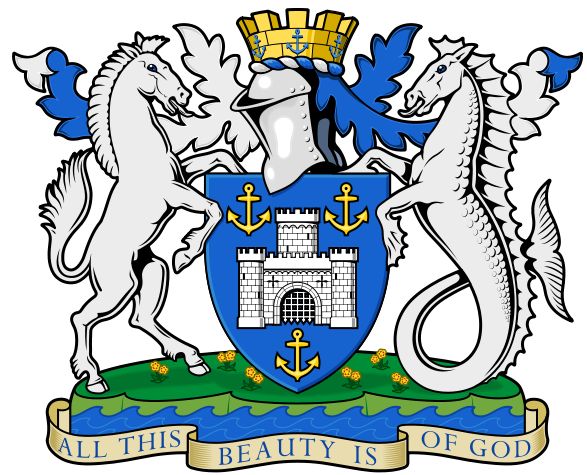
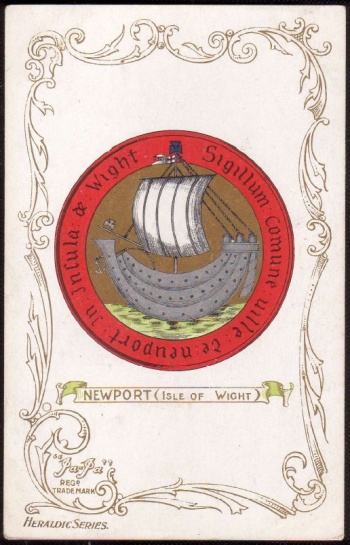
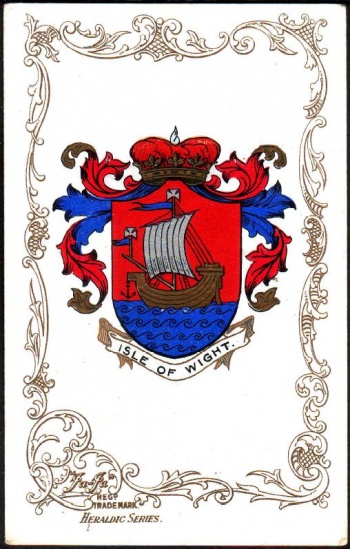
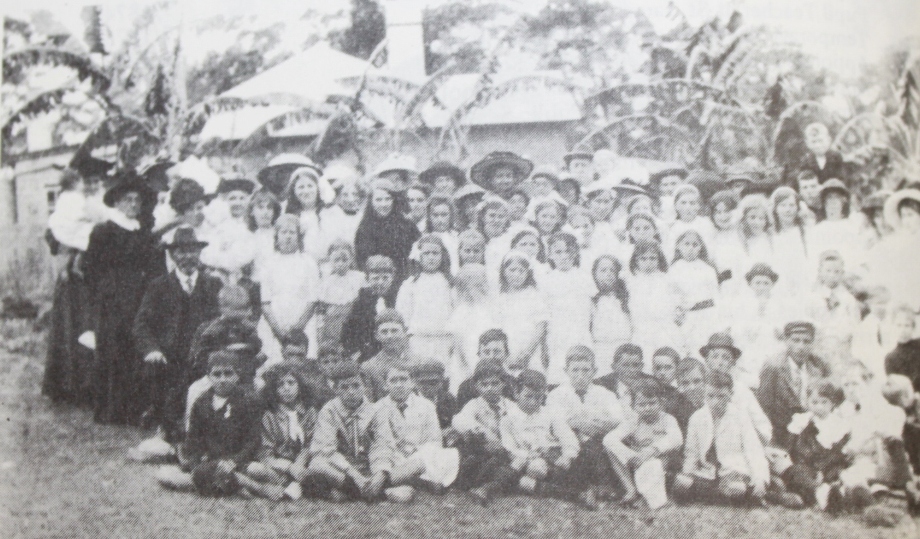
Bayview School Launch.
(See Illustration on this page.)
The Patonga is a motor launch, engaged, morning and evening, of every school day, to convoy children residing at Barrenjoey, Careel Bay, and the adjoining district, to the Bayview(Central) School. Pittwater, although one of the most beautiful, interesting, and picturesque of Nature's gems, is by tho very reason of its loveliness, a difficult place to provide with schools. Until quite recently the only way those children could get-to either Bayview or Newport Public Schools, was by rowing boat, the distance in some cases being nearly eight miles. It will be seen that only in very fine weather was it possible to attend school, and the result, unfortunately, was that the people, by the peculiarity of their location, were practically debarred the advantage of our Public Instruction Act.
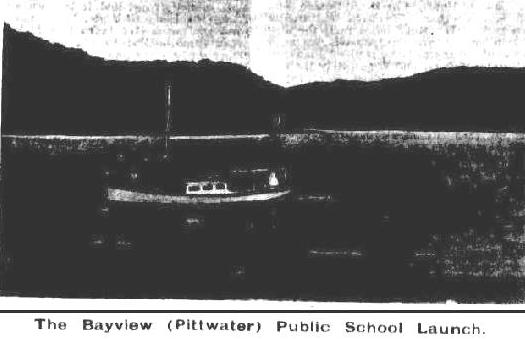 Numerous requests were made to have more convenient school accommodation for these children (29 in number), but there was this difficulty--That to give all these families anything like equal opportunities, would have necessitated two or three small schools. Early in the present year, the Hon John Perry, then Minister for Education, Instructed Mr. Senior Inspector Lobban to take the matter in- hand, and ascertain the best way in which the request could be treated. After exhaustive inquiries had been made by that able officer; assisted by Mr. S. Morrison, teacher Bayview Public School, it was proposed to gather together all the children, and take them by launch to Bayview Public School. This idea commended itself to Mr. Perry, and arrangements were made with Mr. William Sykes,- the owner of the Patonga, to give the scheme a fair trial. The service was inaugurated in April, and has been running nearly four months. As this was one of the last administrative acts of Mr.Perry, he may feel proud of the result, which is described in departmental reports as "an .unqualified success". This, launch, is the first and only school launch in Australia. The boat is a distinct departure from the style usually adopted for motor launches. She is 30ftlong and 8ft beam, the motive power being supplied by a 5 h.p. Hercules engine. She was built specially strong to withstand the rough sea sometimes experienced in the bay, and it is a source of gratification to the department that all through :the recent heavy weather the timetable has been carried out. She is in charge of her owner, and presents an interesting appearance as she comes each morning, with 20 to 30 children, to Church Point Wharf. The Bayview (Pittwater) Public School Launch. Bayview School Launch. (1904, August 3). Australian Town and Country Journal (NSW : 1870 - 1907), p. 37. Retrieved from http://nla.gov.au/nla.news-article71512651
Numerous requests were made to have more convenient school accommodation for these children (29 in number), but there was this difficulty--That to give all these families anything like equal opportunities, would have necessitated two or three small schools. Early in the present year, the Hon John Perry, then Minister for Education, Instructed Mr. Senior Inspector Lobban to take the matter in- hand, and ascertain the best way in which the request could be treated. After exhaustive inquiries had been made by that able officer; assisted by Mr. S. Morrison, teacher Bayview Public School, it was proposed to gather together all the children, and take them by launch to Bayview Public School. This idea commended itself to Mr. Perry, and arrangements were made with Mr. William Sykes,- the owner of the Patonga, to give the scheme a fair trial. The service was inaugurated in April, and has been running nearly four months. As this was one of the last administrative acts of Mr.Perry, he may feel proud of the result, which is described in departmental reports as "an .unqualified success". This, launch, is the first and only school launch in Australia. The boat is a distinct departure from the style usually adopted for motor launches. She is 30ftlong and 8ft beam, the motive power being supplied by a 5 h.p. Hercules engine. She was built specially strong to withstand the rough sea sometimes experienced in the bay, and it is a source of gratification to the department that all through :the recent heavy weather the timetable has been carried out. She is in charge of her owner, and presents an interesting appearance as she comes each morning, with 20 to 30 children, to Church Point Wharf. The Bayview (Pittwater) Public School Launch. Bayview School Launch. (1904, August 3). Australian Town and Country Journal (NSW : 1870 - 1907), p. 37. Retrieved from http://nla.gov.au/nla.news-article71512651
Pittwater School ferry – the Patonga Launch was built by E. Fisk at Penrith in 1903.;
A NEW MODEL LAUNCH
This reminds us of the model oil launch referred to in the heading, and which we were invited to inspect. There is nothing so calculated to push a country forward as private enterprize (although our present Government is not of that opinion), and did we but have more of it, things would soon hum in Australasia as loud as in America. A step or two up the ladder of private enterprize has just been taken in Penrith in connection with water traffic and the result—a splendid launch, built on perfectly modern scientific principles, with all latest contrivances for speed, convenience and comfort. The enterprising proprietor is Mr William Sykes, architect, and the builder Mr E Fisk, well known as a thoroughly efficient and -reliable ship-builder, having served his apprenticeship in Sydney.
Unfortunately for the district this handsome modern launch is not being perfected and expensively finished to float on and grace our deserted waters, but is intended by the owner for service on the Hawkesbury River. Whether this is through the unwillingness of the public to patronise and encourage such undertakings, or whether the proprietor has in view a much more profitable scheme in the locality chosen, is not in our province to say. Anyway, it is clear at-the present time our river has no attraction for its owners, and tho cause remains a knotty problem to solve. The new launch is being built at the rear of Mr Sykes residence in High-street, and is 30ft in length—the beam being 8ft- has a depth of 4ft 6in. and a draught of about 2ft. She is being built especially strong, having 3 lots of frames, and for greater protection is double-planked all over. The engine-house, which is placed centrally, is very neatly constructed and well lighted, the upper part, which is glazed with very thick glass, standing about 2ft above the deck. The motive power will be supplied by a powerful oil engine of latest design. The boat is beautifully fitted up for the accommodation of 16 people, sleeping arrangements being made for 8. For the safety of passengers the floor of the cock-pit and all seats are constituted so as to float in case of necessity, and so be the means of saving life. All this is being done in compliance with the Navigation Department's regulations. The fore cabin is also conveniently arranged and fitted up, and there is a hat oh way on the deck above for the storage of the anchor, &o. The lower parts of the launch are securely covered with copper sheeting, to water mark, the whole of the work being splendidly executed. The boat will have a single sorew. Above deck she will be fitted with awnings which may be made entirely water and wind proof when necessary. The launch, when finished, will be a handsome structure, fit to face either a rough sea or smoother waters, The proprietor informs us the boat will be run by his son. A Model New Launch. (1903, May 23). Nepean Times (Penrith, NSW : 1882 - 1962), p. 6. Retrieved from http://nla.gov.au/nla.news-article100916017
Transfers and Appointments.— Teachers: - Mr. S. Morrison, from Newport to Mona Vale; "SCHOOLS AND SCHOOL TEACHERS."The Sydney Mail and New South Wales Advertiser (NSW : 1871 - 1912) 5 September 1906: http://nla.gov.au/nla.news-article163682045
What it was like to catch this early 'ferry' of Pittwater:
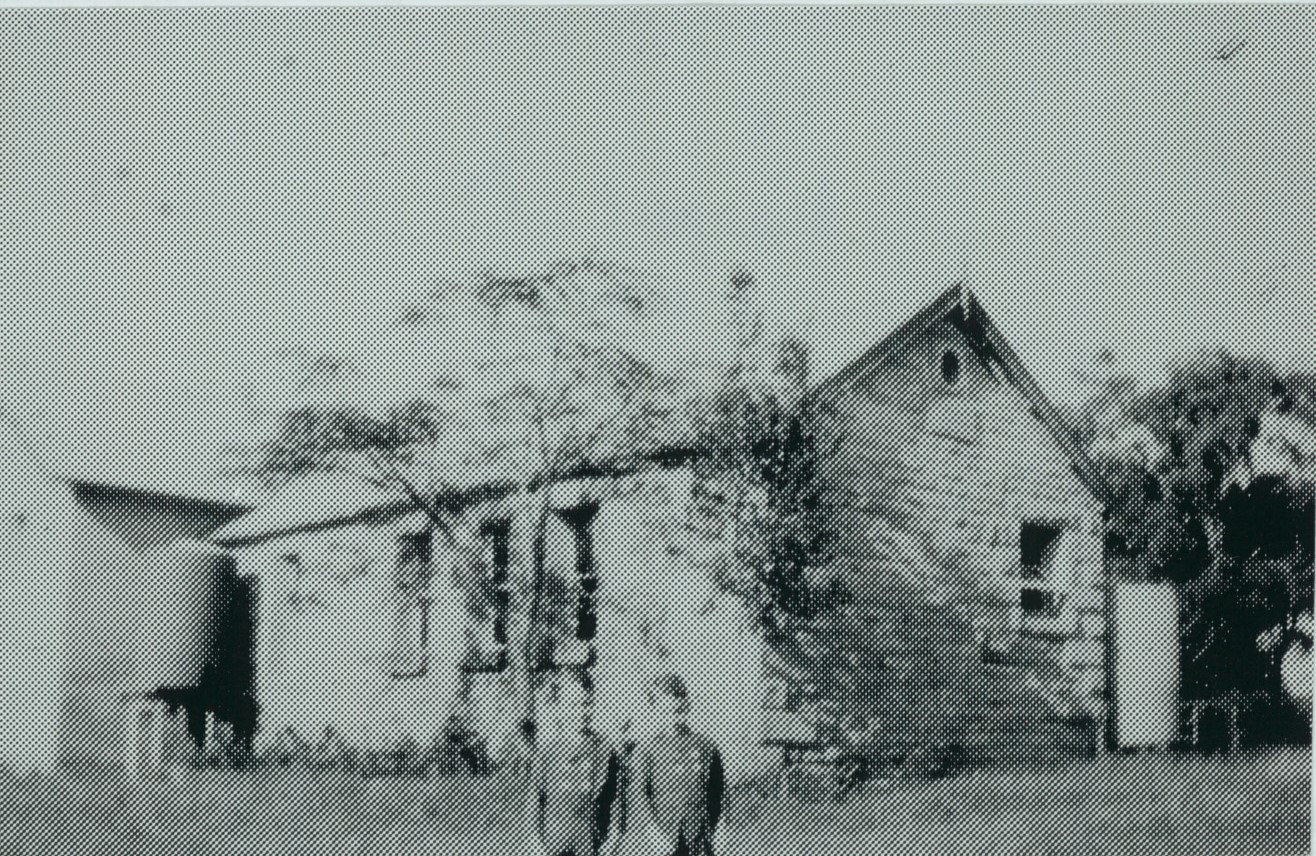
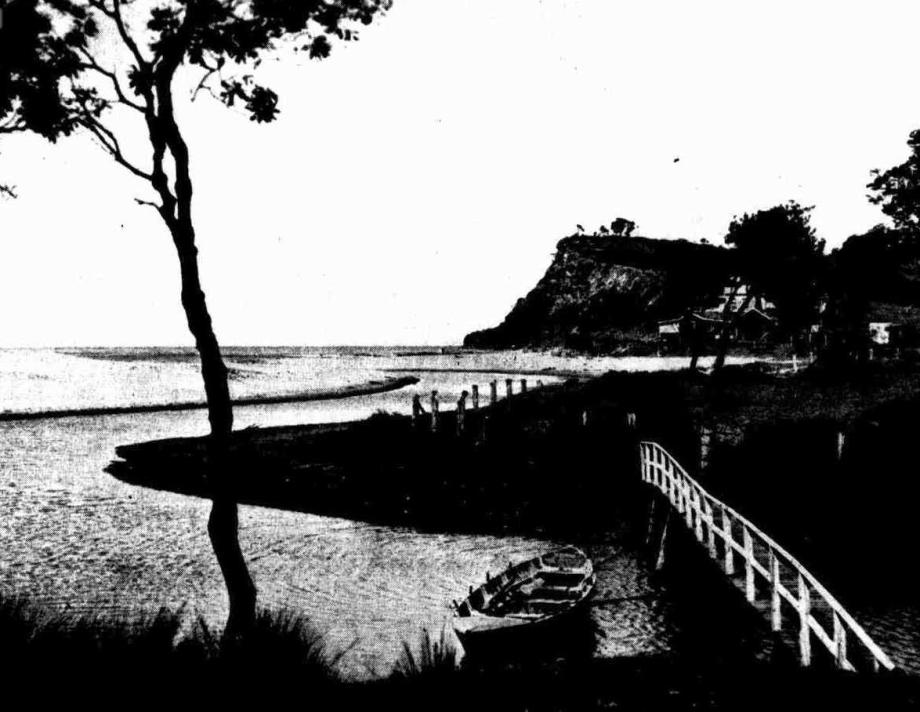
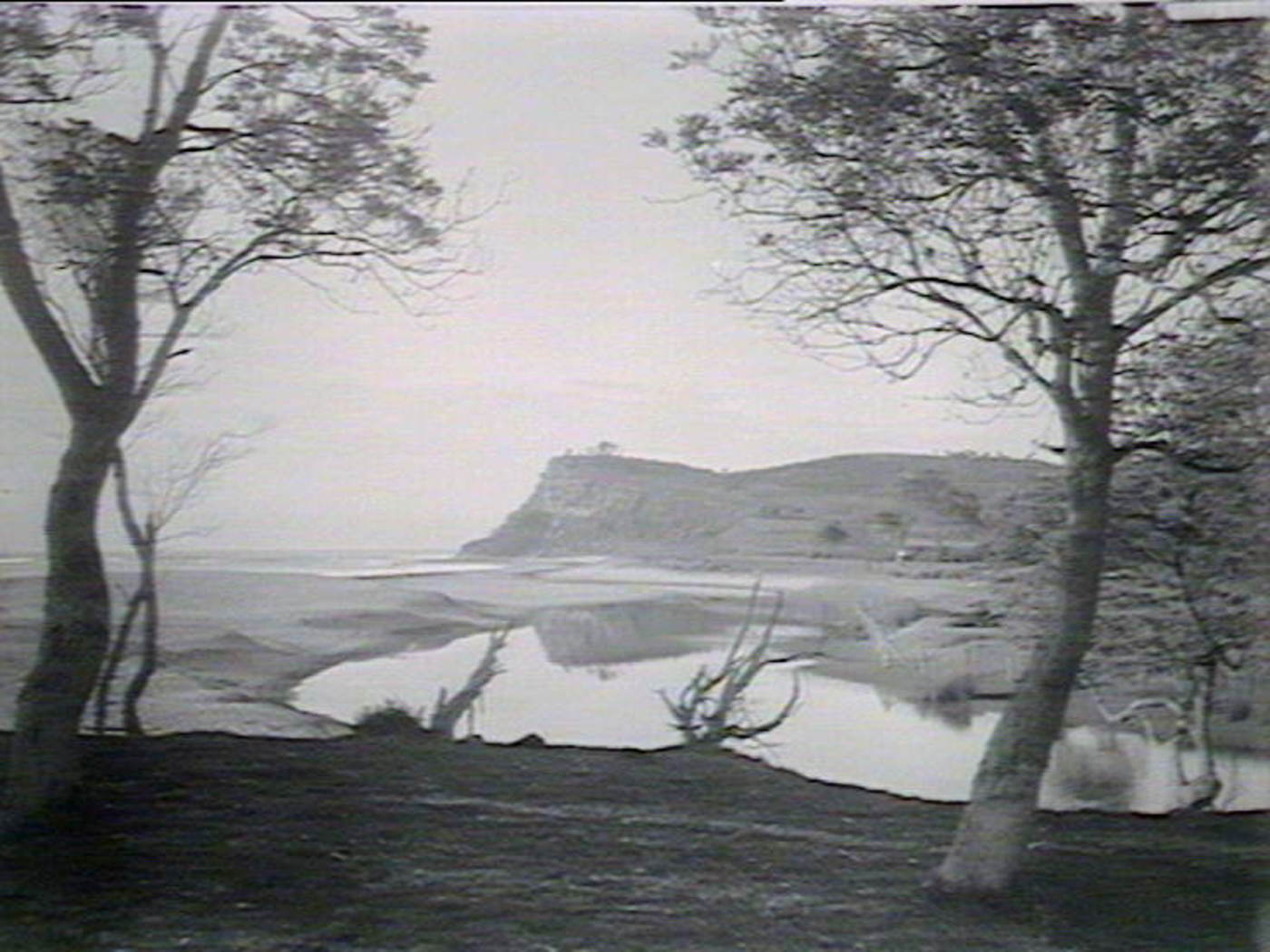
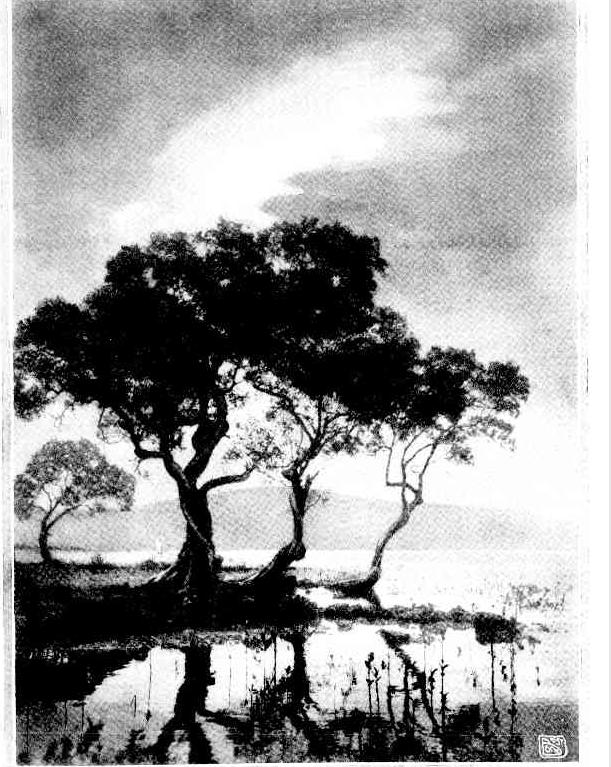
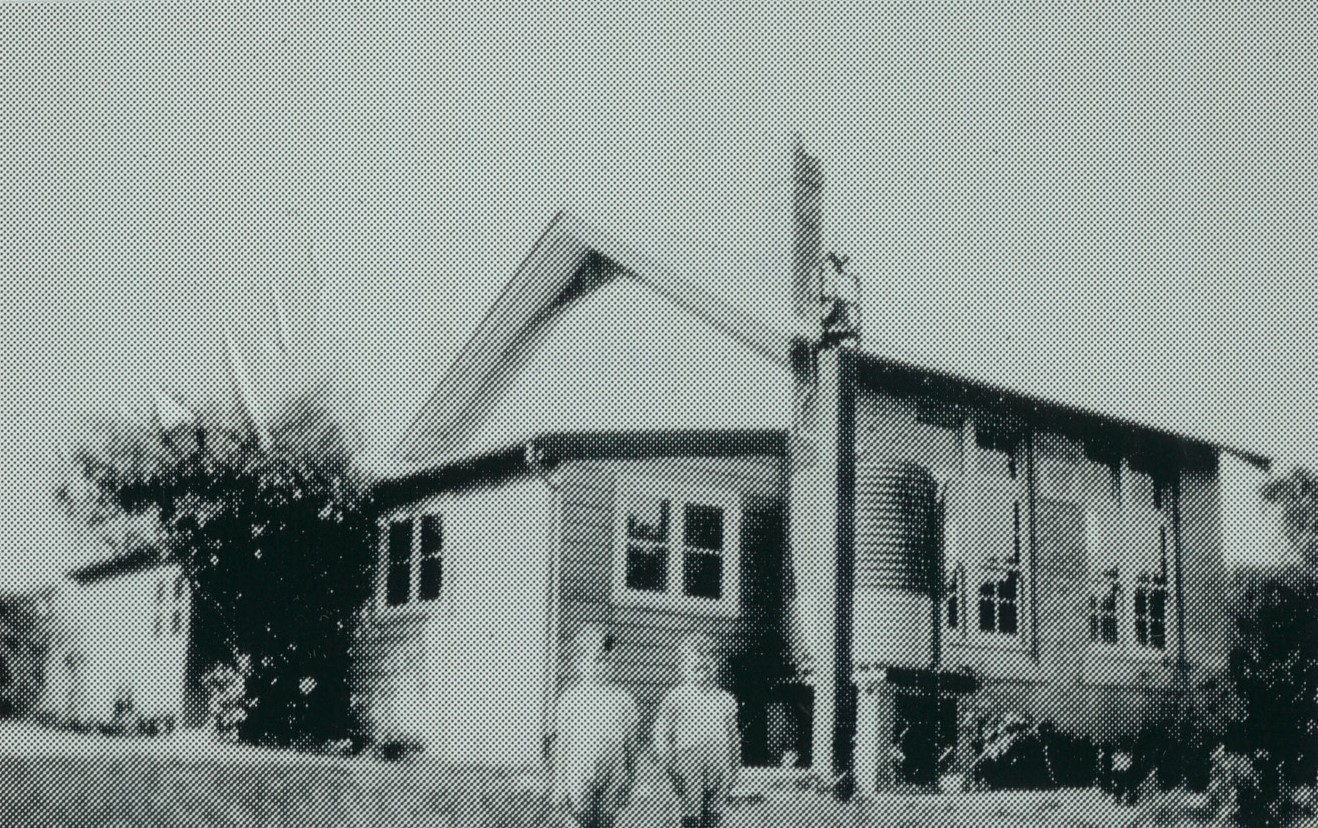
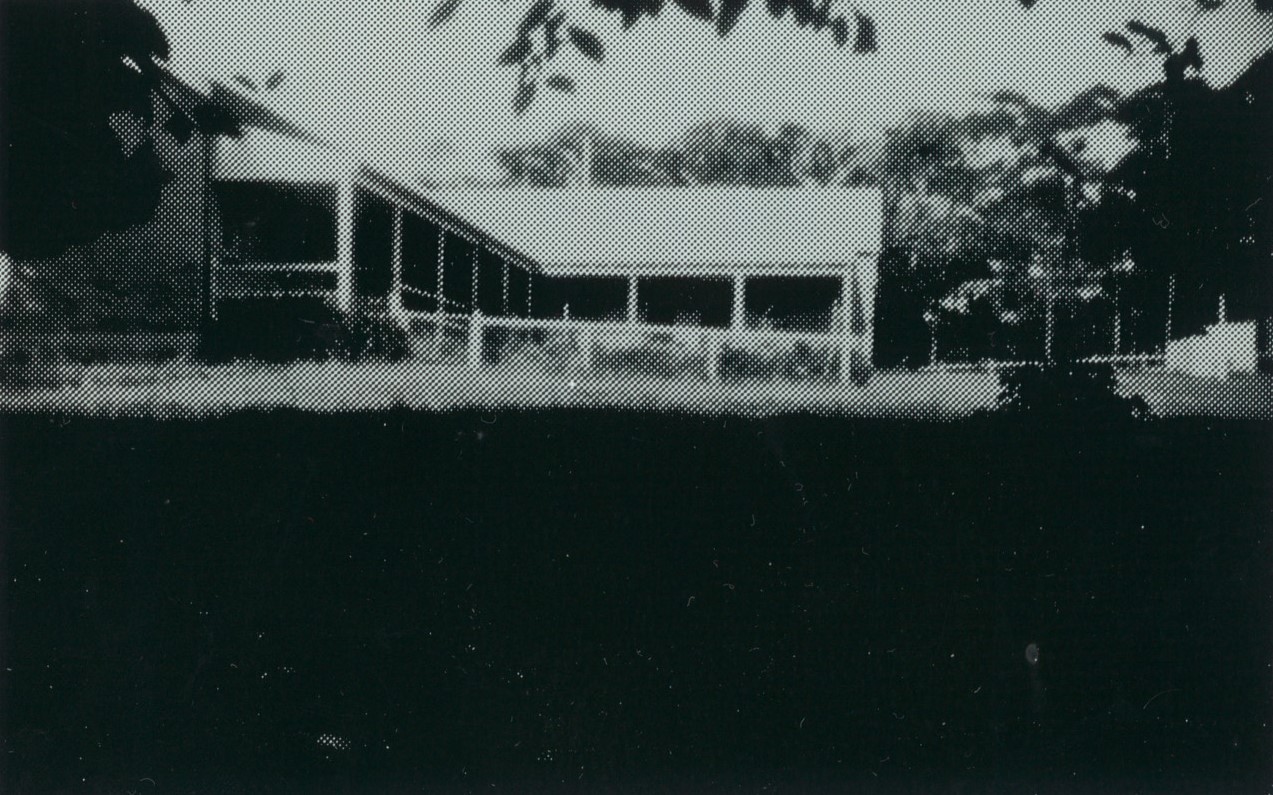
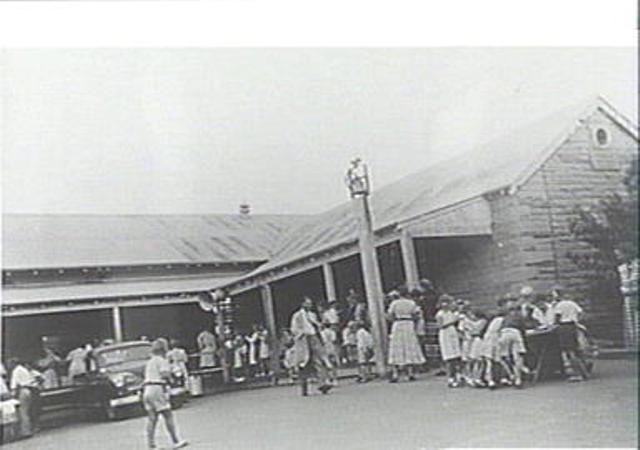
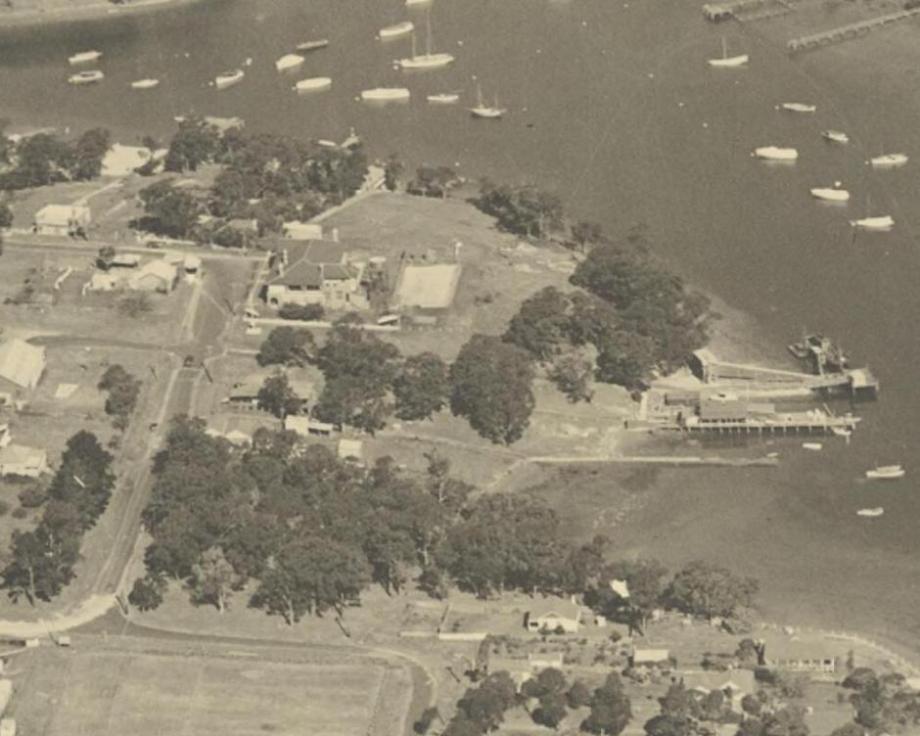
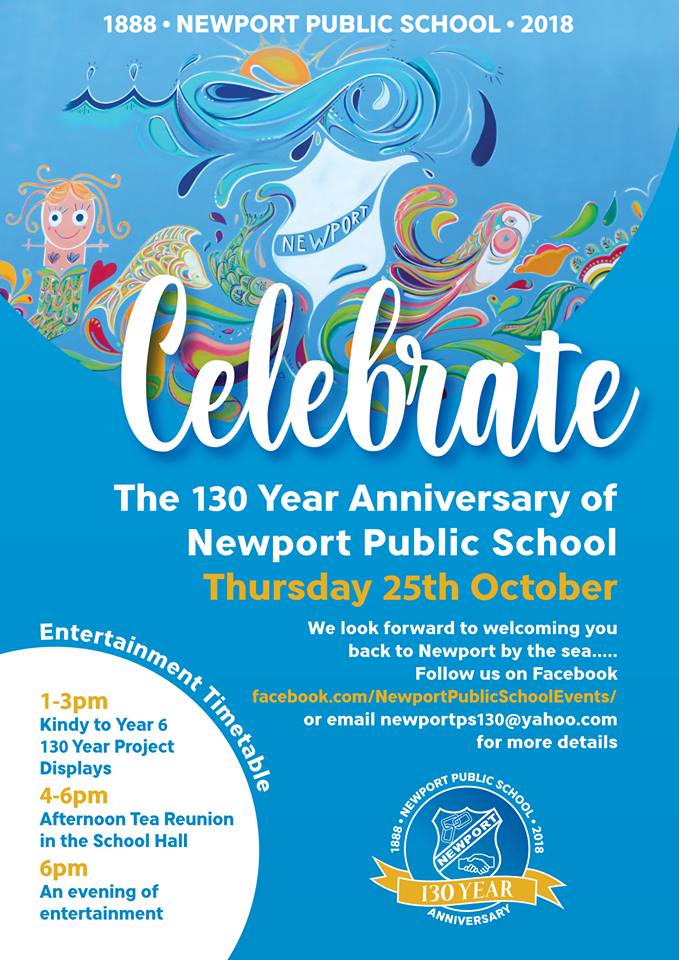
Where the road dips down it is nestled there,
With its headlands green as a mermaid's hair;
And the sun a-gleam on its sapphire sea
Where the spray leaps high and the waves break free.
Hear the wild gulls call from their rocky ledge,
Where the she-oaks sway to the water's edge;
And the air is cooled by the evening breeze
As the sun sinks low o'er the mangrove trees.
With its golden beach where the wet sands gleam
On the brink where the billows swirl and cream;
When the lilac shadows of twilight fall
I am winging there at a whip-bird's call!
Dorothea Dowling.
CHARM OF NEWPORT. (1935, March 14). The Sydney Morning Herald (NSW : 1842 - 1954), p. 11 Supplement: Women's Supplement. Retrieved from http://nla.gov.au/nla.news-article17171353
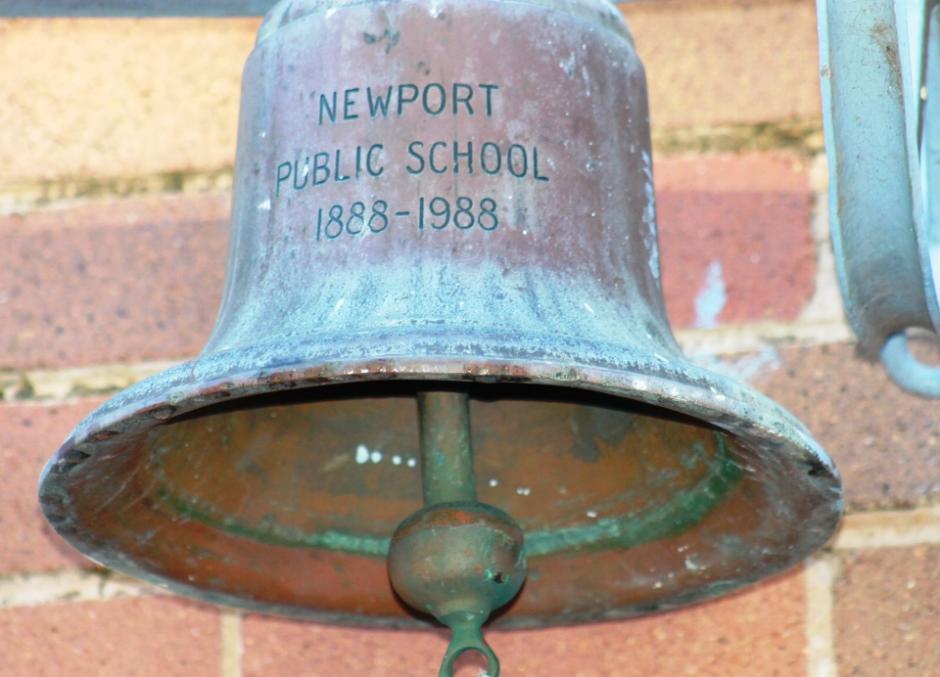
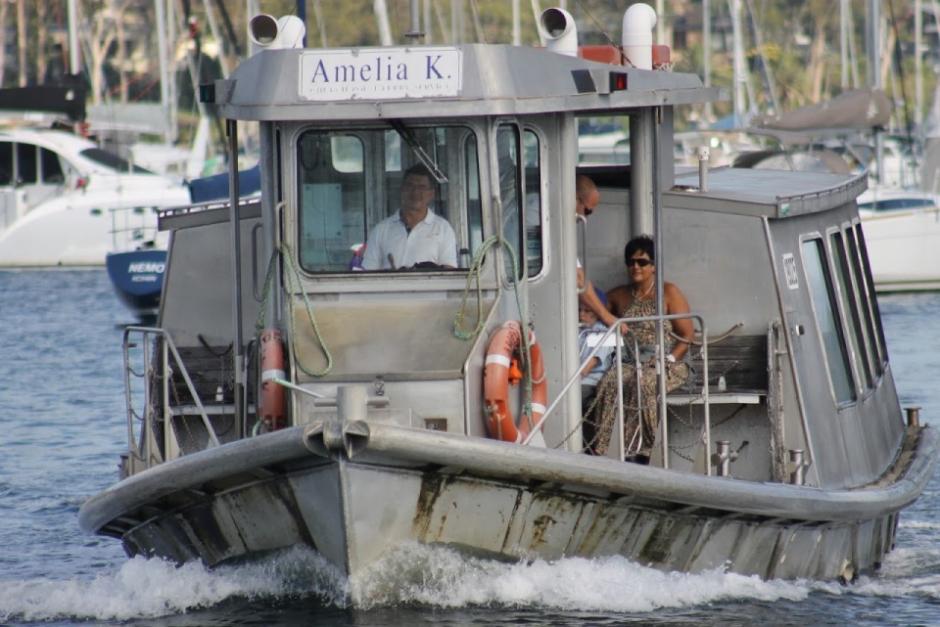
Church Point Ferries Ferry Master Ian (aye aye Captain!) on the Church Point to Newport School Ferry Run March 2016
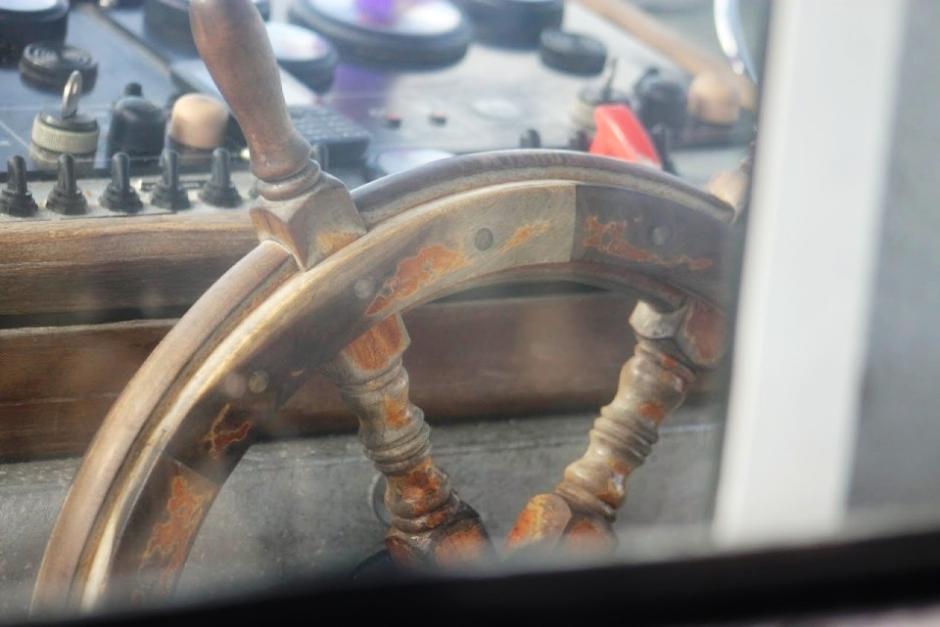
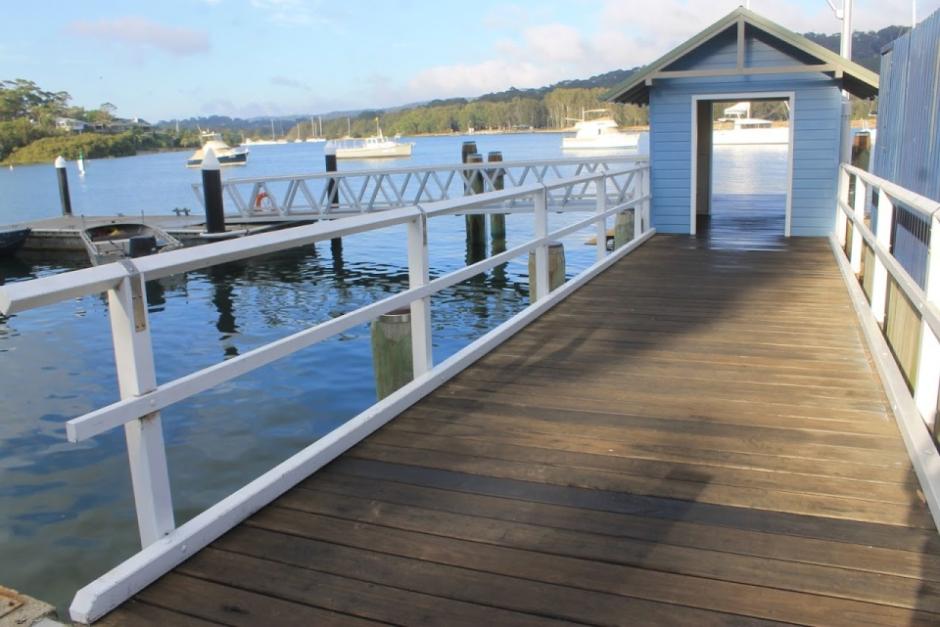
Newport Public Wharf - view to Winnererremy Bay
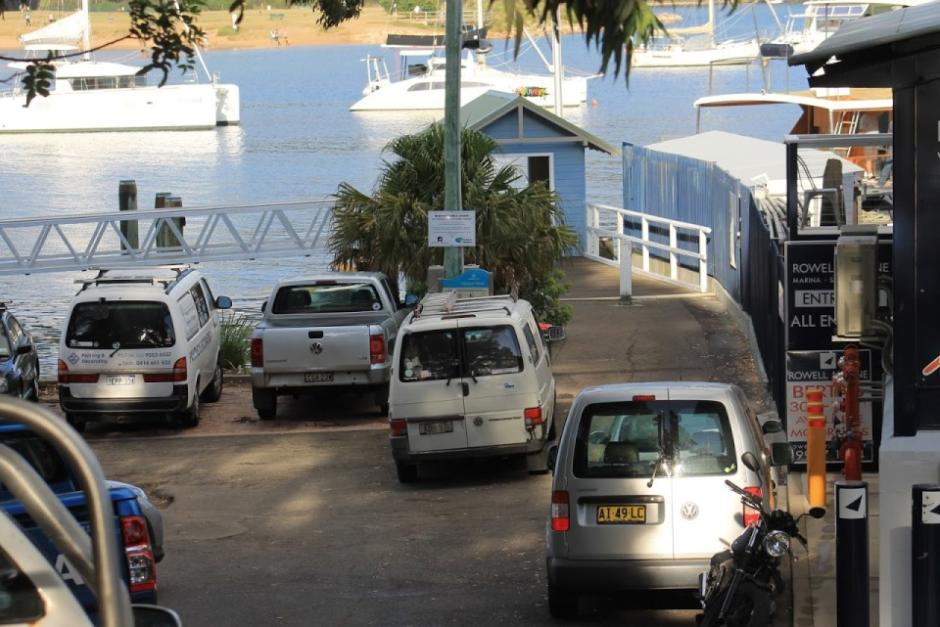
Newport Public Wharf March 2016
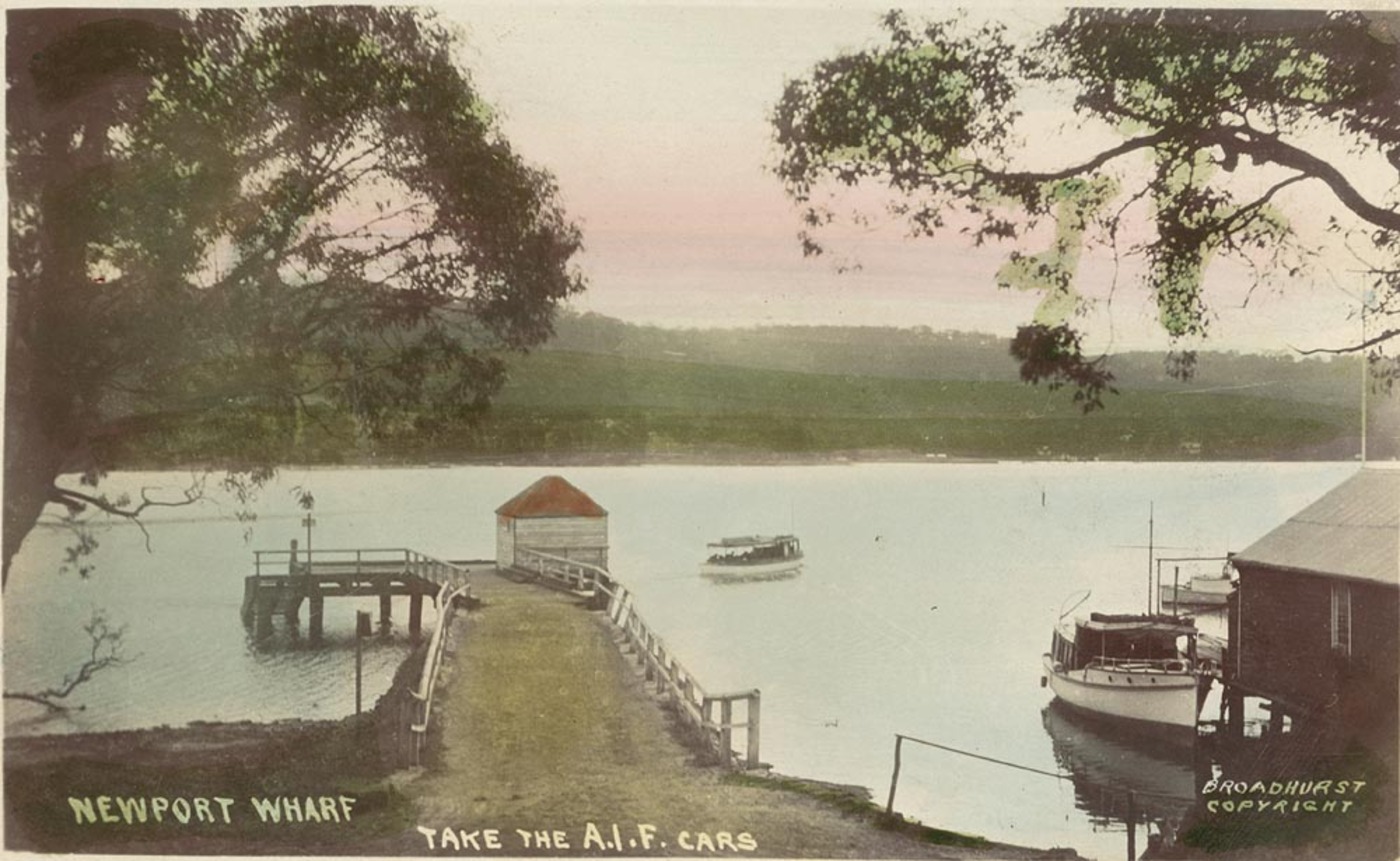
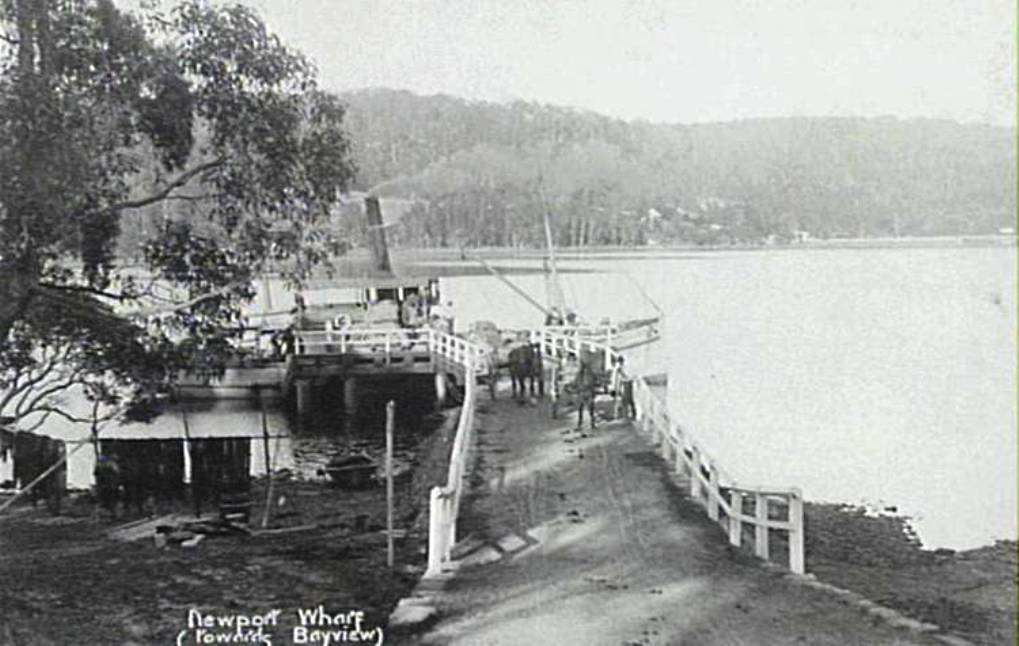
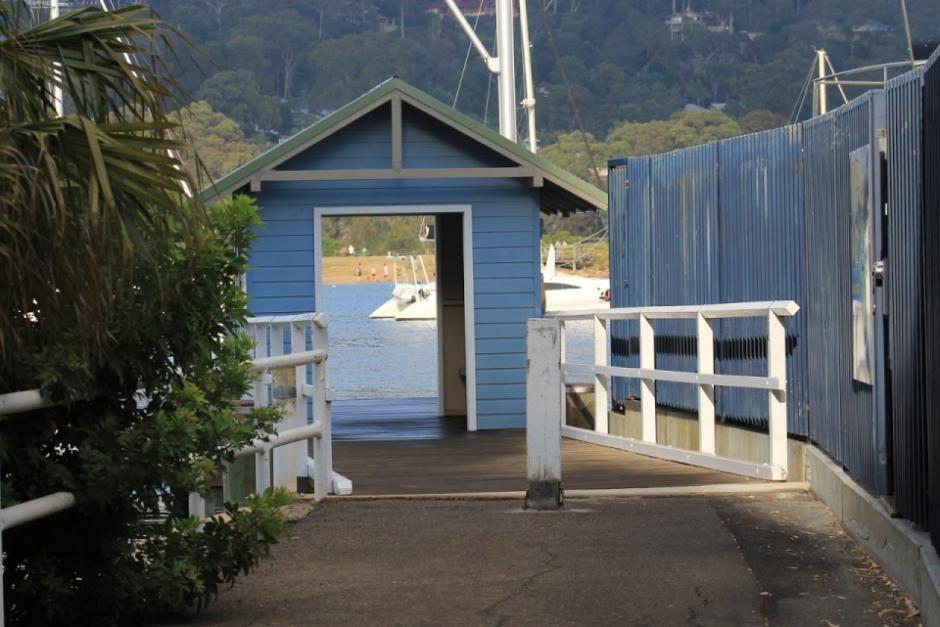
Newport Public Wharf March 2016
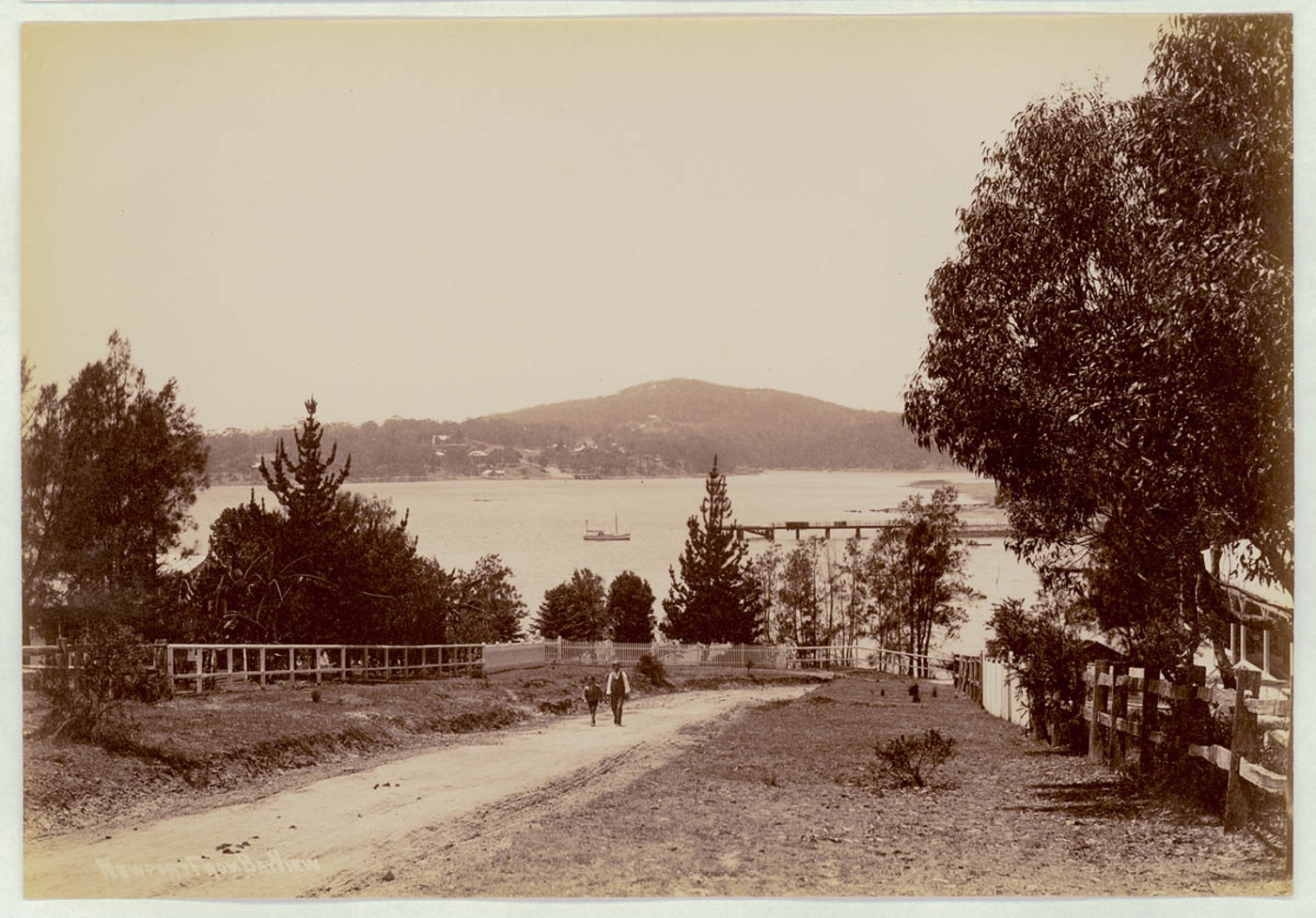
Newport Wharf - by Sydney & Ashfield : Broadhurst Post Card Publishers from album: Scenes of Newport, N.S.W, Image No: 106125h, courtesy State Library of NSW - circa 1900
A Few Extras
This is Church Point- Bayview
Matilda was at Concord Provisional School in 1880: Government Gazette. (1880, September 21). Evening News (Sydney, NSW : 1869 - 1931), , p. 3. Retrieved from http://nla.gov.au/nla.news-article108733566
PUBLIC SCHOOL TEACHERS The undermentioned teachers have been appointed to the Public and Provisional schools specified in connection with their respective names- Provisional Schools – Matilda Cannan, Pittwater PUBLIC SCHOOL TEACHERS. (1883, May 26). Freeman's Journal (Sydney, NSW : 1850 - 1932), , p. 9. Retrieved from http://nla.gov.au/nla.news-article110557837
WARHURST — CANNAN. — October 1, at St. Mary's, Mortlake, by the Rev. Canon Moreton, William Henry Warhurst, only son of Ralph Warhurst, of Mossleys, Manchester, England, to Matilda Cannan, eldest daughter of Henry Dexter Cannan, of Lockleys, Concord. Family Notices (1888, November 27). The Sydney Morning Herald (NSW : 1842 - 1954), , p. 1. Retrieved from http://nla.gov.au/nla.news-article13704960
Tenders Accepted -The undermentioned tenders in connection with Public schools have been accepted by the Government; Pittwater, improvements, J Boulton, £10 10s bd, GOVERNMENT GAZETTE. (1894, June 25). The Sydney Morning Herald (NSW : 1842 - 1954), p. 7. Retrieved from http://nla.gov.au/nla.news-article13956936
Teachers' Meeting
A meeting of teachers was held at tho Adelong Superior Public School on Saturday last, Mr. Barnes presiding. The chairman extended a welcome to Mr. Moody, the new headmaster of the school and Mr. Moody suitably responded. It was decided to cooperate in the matter of a Teachers Journal. Mr. Moody was elected President of the Association-, in place of Mr. Clarke, resigned. Proposed to ask Mr. Morrison, Public School .Newport, to represent the Adelong branch at the Conference of the Country Branches Association, to be held at Michaelmas. Teachers' Meeting. (1919, September 11).The Tumut and Adelong Times (NSW : 1864 - 1867; 1899 - 1950), p. 4. Retrieved from http://nla.gov.au/nla.news-article139039116
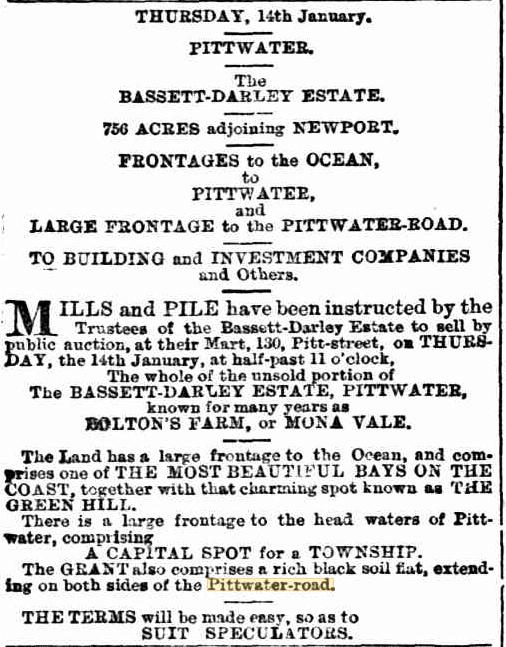
Advertising (1886, January 14). The Sydney Morning Herald (NSW : 1842 - 1954), , p. 15. Retrieved from http://nla.gov.au/nla.news-article13609033
PRINCE OF WALES BIRTHDAY. SALE OF ALLOTMENTS IN THAT CHARMING SANATORIUM, NEWPORT, THE LOVELIEST SPOT IN AUSTRALIA.DON'T FORGET TO ATTEND THE SALE, THE TOWNSHIP IS LAID OUT ON A GRAND SCALE. THE MAIN-STREET IS 2 CHAINS WIDE. Call for a Lithograph, MILLS, PILE, and GILCHRIST, Auctioneers. PRINCE OF WALES BIRTHDAY. THE GREAT SALE of the SEASON. THE MOST GLORIOUS PICNIC. THE GREAT SALE of the NEW WATERING PLACE, NEWPORT. AT THE HEAD OF PITTWATER, CLOSE TO MANLY. THE PORT OF THE HAWKESBURY. REGULAR COACH ACCOMMODATION TO MANLY-. REGULAR COMMUNICATION BETWEEN BRISBANE WATER.THE STARTING PORT of the HAWKESBURY STEAMERS. THE MOST BEAUTIFUL RETREAT in NEW SOUTH WALES. ATTEND THE SALE' on the 9th NOVEMBER. PRINCE OF WALES' BIRTHDAY". THE FIRST SALE OF ALLOTMENTS IN THE NEW MARINE TOWNSHIP OF NEWPORT. MILLS, PILES and GILCHRIST will sell by public Auction, on the GROUND, NOVEMBER 9th, at 2 p.m . SEVERAL SECTION'S IN THAT MOST PROMISING TOWNSHIP, which possesses the following advantages :
IT IS NEAR a beautiful OCEAN BEACH, at the head of a lovely- bay, between romantic headlands. It has extensive frontage to the deep waters of PITTWATER LAKE. THE LINE of STEAMERS for-BRISBANE WATER and the Hawkesbury start from the NEWPORT WHARF. THE SCENERY is beautiful in the extreme, the views from the adjacent mountains are most extensive, the vegetation superb. IT WILL he the head centre of YACHTING and FISHING PARTIES. AS A PROOF of its prospects, it may be mentioned that although the HOTEL (now an accommodation house only, until a license is got for it) has only been occupied ONE MONTH, yet the tenant has made APPLICATION for 12 additional rooms, and offered to contribute to the cost of the same. THE PROPRIETORS have so high an opinion of the FUTURE of NEWPORT, that they have decided to sell only a portion thereof, and hold the remainder for some years to come. ATTEND THE SALE. LIBERAL TERMS. LITHOGRAPHS NOW READY. Advertising. (1880, November 5). The Sydney Morning Herald(NSW : 1842 - 1954), p. 10. Retrieved from http://nla.gov.au/nla.news-article13478153
FOR SALE AT THE ROOM'S, 114, PITT-STREET, some FINE BUSINESS SITES in the TOWNSHIP OF NEWPORT, suitable for Hotels and Shops. A good business will be done there before long, Newport being the true PORT OF THE HAWKESBURY. The terms will be £5 deposit on each lot, and the balance 20s per month. Advertising. (1880, November 24). The Sydney Morning Herald(NSW : 1842 - 1954), p. 13. Retrieved from http://nla.gov.au/nla.news-article13483571
Suburban Railway Agitation.
To avoid misunderstanding and inconvenience, it is hereby notified that, by agreement with the lessee of the Newport Hotel, and Jetty connected therewith, for a term of years, the Hunter River New Steam Navigation Company has the SOLE and EXCLUSIVE RIGHT (excepting only the regular small vessels) of calling at the said Newport jetty to land and embark passengers on such days as the said Company choose to run excursion trips with their steamships.
THOS. H. HODGES, - Lessee of Newport Hotel and Jetty.
F. J. THOMAS, Manager H.R.N.S.N. Co. 15th December, 1890.
POPULAR EXCURSIONS per H.R.N.S.N. CO.'S . STEAMERS.
PROPOSED EXCURSIONS DURING HOLIDAYS.
Newcastle to Port Stephens, Boxing Day, 26th Dec.
Sydney to Newport, Boxing Day. 26th Dec.
to Hawkesbury Bridge, &c., .Saturday Afternoon, 27th Dec.
to Newport. New Year's Day, 1st Jan.
to Hawkesbury Bridge, &c., New Year's Day, 1st Jan.
to Newport, Sunday, 11th Jan. „ * „ Anniversary Day, 26th Jan. Advertising (1890, December 20). Evening News (Sydney, NSW : 1869 - 1931), , p. 1. Retrieved from http://nla.gov.au/nla.news-article113746346
ST. LEONARDS. SIR HENRY PARKES AT NEWPORT.
The electoral campaign so far as the Ministry are Concerned was opened yesterday, when Sir Henry Parkes addressed a small meeting at Hodge's Newport Hotel in the afternoon. Mr. W. Bulfin occupied the chair.
Sir HENRY PARKES, who met with a hearty reception said he had come out to Newport that morning with some pleasurable anticipations. He remembered addressing a small meeting in that immediate neighbourhood some time ago, and ho met with so much cordiality and altogether so much enjoyed his visit that he felt certain that he should have a repetition of that kind of enjoyment. But he came out here with other anticipations, which might appear to some hardly well founded, but which to his mind, had a very good foundation . He looked forward to the time when that portion of the colony would be a very busy scene. It was not in the nature of things for a place possessing so many advantages in so many features of natural attractiveness to remain for a long time without those natural beauties being taken advantage of and though they were a scattered hamlet now with only a few persons attending a meeting of that kind he anticipated the time-and not beyond another generation when Newport would be a well-known fashionable watering place…..
Sir Henry Parkes, in replying, said that as they had been good enough to pass a vote of confidence in him without asking any questions, he had one or two pieces of information to give them as a member of the Government. The Government was considering, and he had no doubt that consideration would lead to active steps being taken of supplying them with a wharf suited to their purposes, on both sides of that important water He ascertained that from the Works Department. Also he had to tell them that the Government was considering better requirements for the Public school there, for the accommodation and shelter of the children attending.
He was glad to see the youngsters present, because they had arrived at an age when they came to take an interest in the course of public affairs, and in a few short years-a few years which would fly away in swifter moments than they could imagine-they would be men in the life of the country.
A vote of thanks to the chairman was passed, and the meeting closed. ST. LEONARDS. (1891, June 9). The Sydney Morning Herald(NSW : 1842 - 1954), p. 5. from http://nla.gov.au/nla.news-article13827407
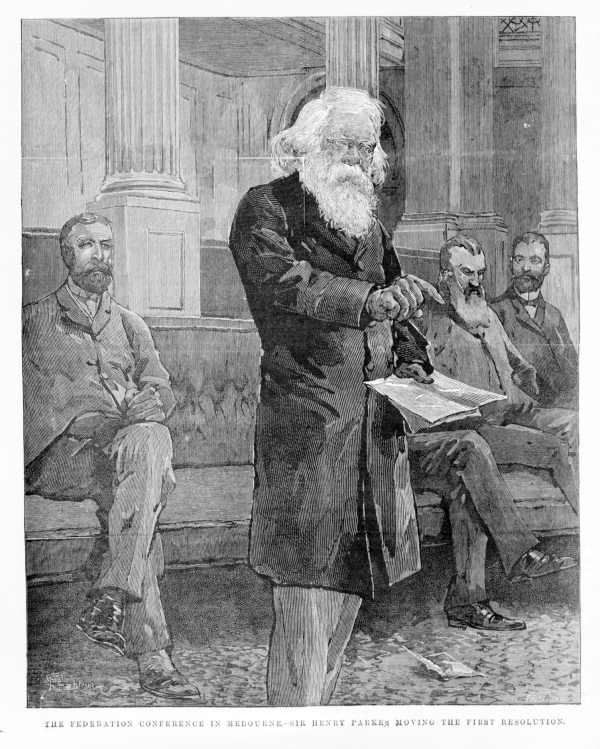 Sir Henry Parkes, GCMG (27 May 1815 – 27 April 1896) was a colonial Australian politician and longest non-consecutive Premier of the Colony of New South Wales, the present-day state of New South Wales in theCommonwealth of Australia. He has been referred to as the "Father of Federation" due to his early promotion for thefederation of the six colonies of Australia and as an early critic of British convict transportation and as a proponent for the expansion of the Australian continental rail network.
Sir Henry Parkes, GCMG (27 May 1815 – 27 April 1896) was a colonial Australian politician and longest non-consecutive Premier of the Colony of New South Wales, the present-day state of New South Wales in theCommonwealth of Australia. He has been referred to as the "Father of Federation" due to his early promotion for thefederation of the six colonies of Australia and as an early critic of British convict transportation and as a proponent for the expansion of the Australian continental rail network.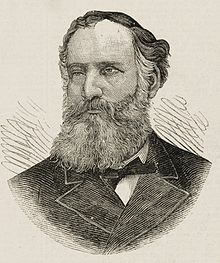 Sir George Richard Dibbs KCMG (12 October 1834 – 5 August 1904) was an Australian politician who was Premier of New South Wales on three occasions. Dibbs was born in Sydney, son of Captain John Dibbs, who disappeared in the same year. He was educated at the Australian College under Dr Lang, obtained a position as a young man in a Sydney wine merchant's business, and afterwards was in partnership as a merchant with a brother.
Sir George Richard Dibbs KCMG (12 October 1834 – 5 August 1904) was an Australian politician who was Premier of New South Wales on three occasions. Dibbs was born in Sydney, son of Captain John Dibbs, who disappeared in the same year. He was educated at the Australian College under Dr Lang, obtained a position as a young man in a Sydney wine merchant's business, and afterwards was in partnership as a merchant with a brother.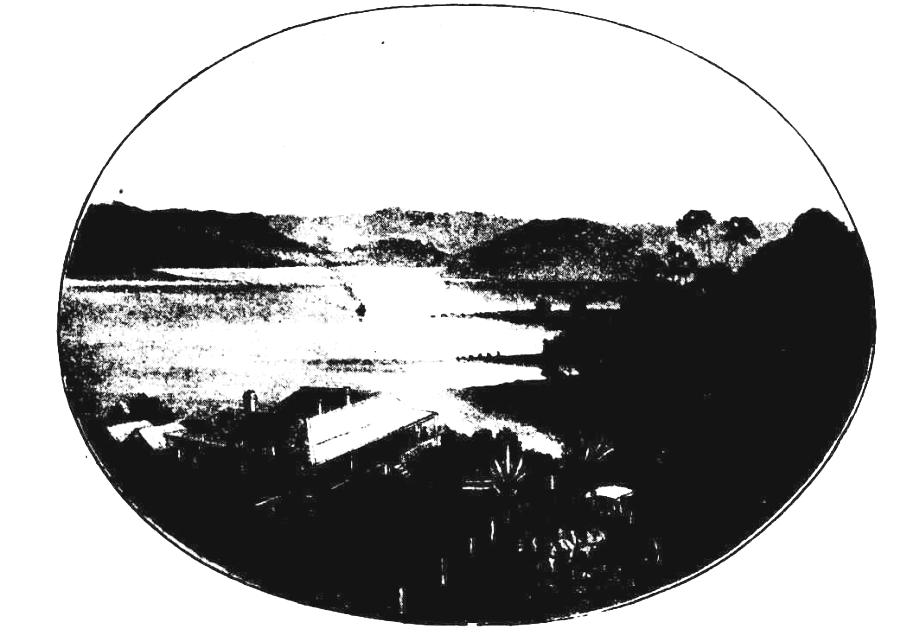
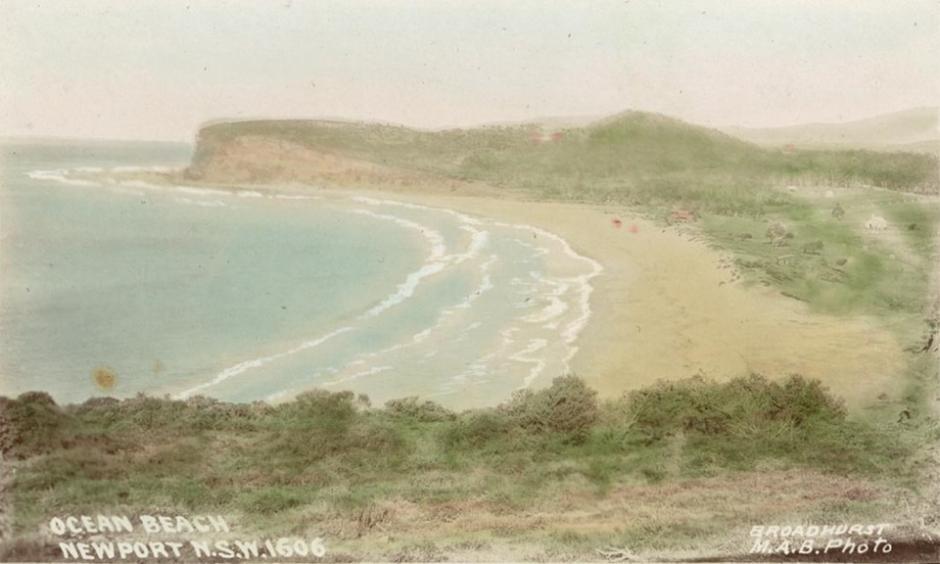
Above: Ocean Beach, Newport. Image Number: a106115, from album 'Scenes of Newport, N.S.W.' ca. 1900-1927, Sydney & Ashfield : Broadhurst Post Card Publishers, courtesy State Library of NSW
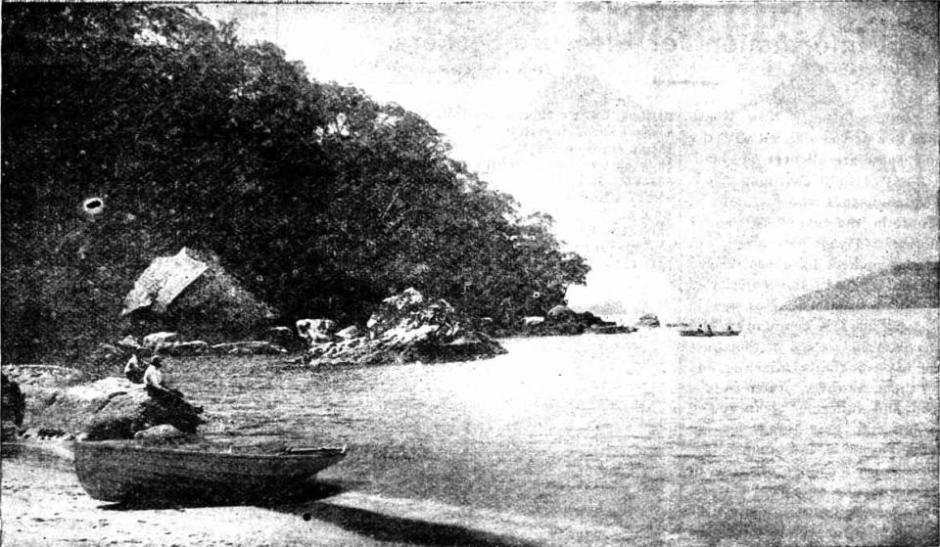
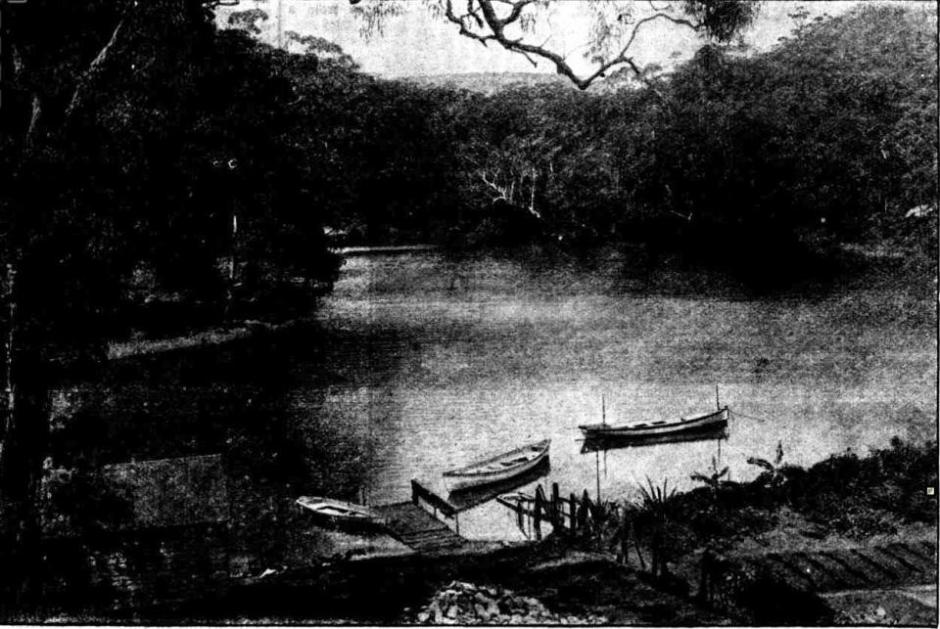
OTHER RESORTS NEAR THE CITY.
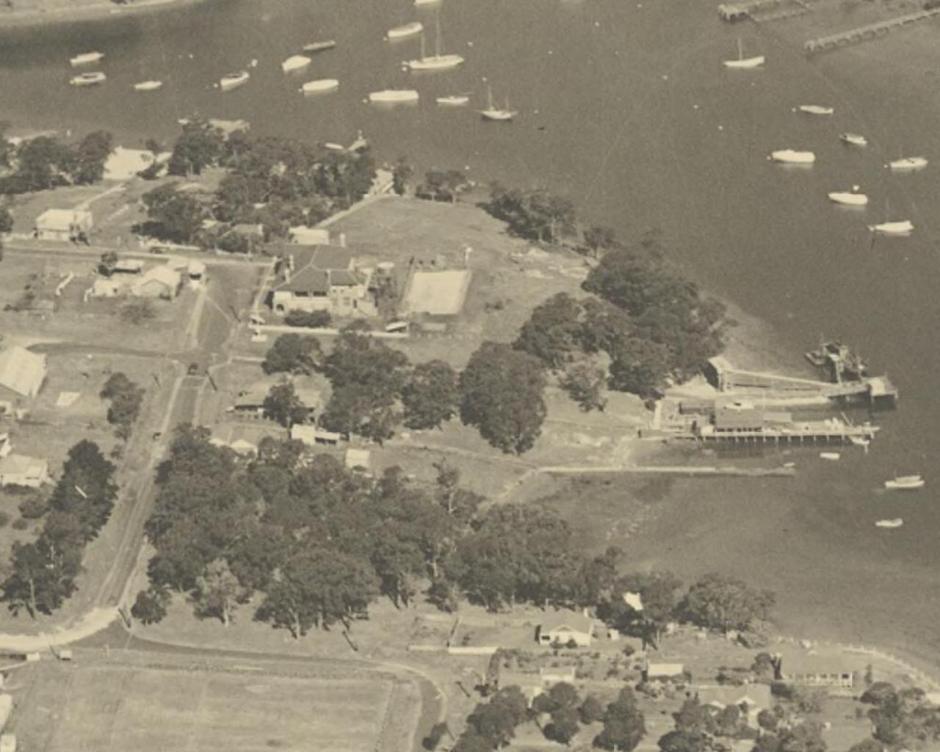
Aerial view of Newport bay circa 1935 by E. W. (Edward William) Searle, PIC P838/838a-b LOC Album 1124/9, courtesy National Library of Australia.
Bilgola Plateau Public School
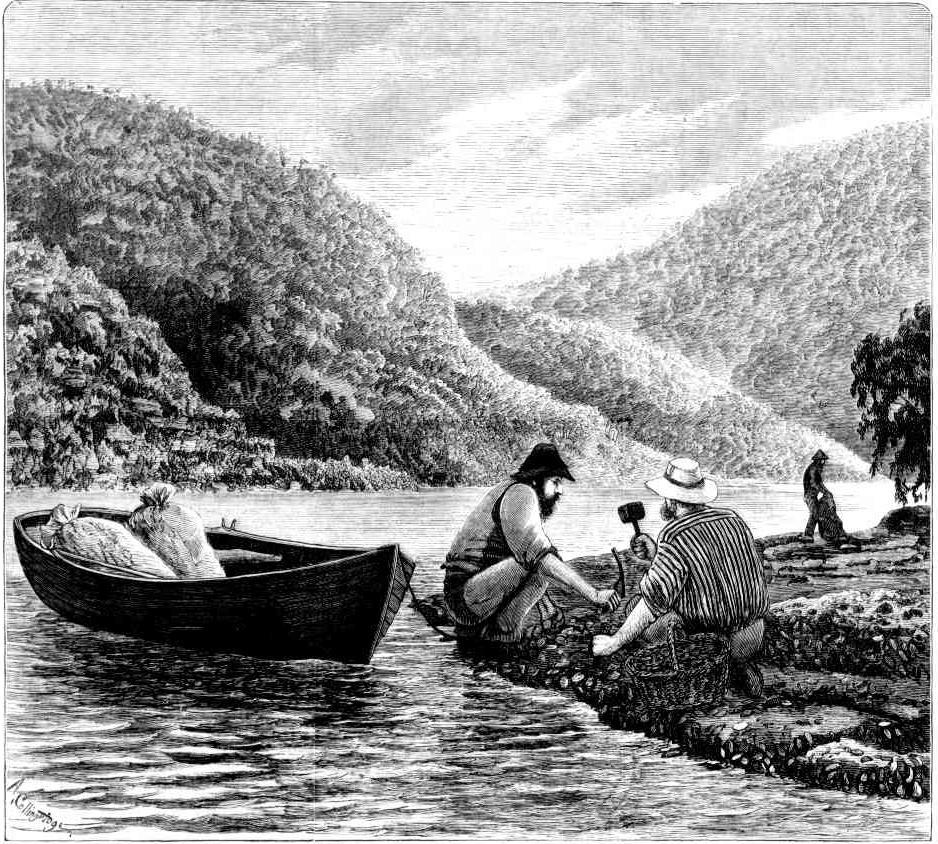
What it would have looked like for all those who came to Newport for the famous 'Newport Oysters, See:
Oystering in the Pittwater Estuary - Oyster Kings and Pearl Kings and When Not to Harvest Oysters
Oystering on the Hawkesbury.
Our artist has depicted one of the minor industries of the New South Wales coast — namely, oystering for the metropolitan market. The sketch sufficiently tells its own story. It will be seen that the purveyors of this delicious addition to our table luxuries ply their avocation amidst natural surroundings which are surpassingly beautiful. We have not, however, heard of any oyster-getters of the Hawkesbury developing a passion for poetry or painting. The rule is that they are intent on nothing but oysters. Very simple and primitive is the method in which the industry is conducted. And, indeed, all fishing whatever on the Australian coast is full of suggestion that we are far behind the world generally in securing and distributing the plentiful and wholesome food of the sea. At present the food of the land is cheap and easily obtained, and probably we must wait for something like a food famine before we shall awake to the vast food resources of the Pacific. Oysters will, perhaps, be quoted as the first exception to the prevailing policy of apathy and blundering. They are unboundedly popular with the British palate ; but, unless they are judiciously 'farmed,' the supply is sore to give out. It is a long time since they were so scarce as they are this summer. The Government has done a right thing in checking indiscriminate and intermittent oystering, and private enterprise is waking up to the fact that ' there is money ' in oy6ter-beds, if properly laid down and looked after. On the Hawkesbury and other Northern rivers a good many men have got a fair living in the simple manner indicated in our illustration. Three bags of oysters are obtained, for two of which they receive £2, and the third is freight-payment to the little coasting steamer which takes the fish to Sydney. OYSTERING ON THE HAWKESBURY,Oystering on the Hawkesbury. (1882, March 4). The Sydney Mail and New South Wales Advertiser (NSW : 1871 - 1912), , p. 340. Retrieved from http://nla.gov.au/nla.news-article162030659